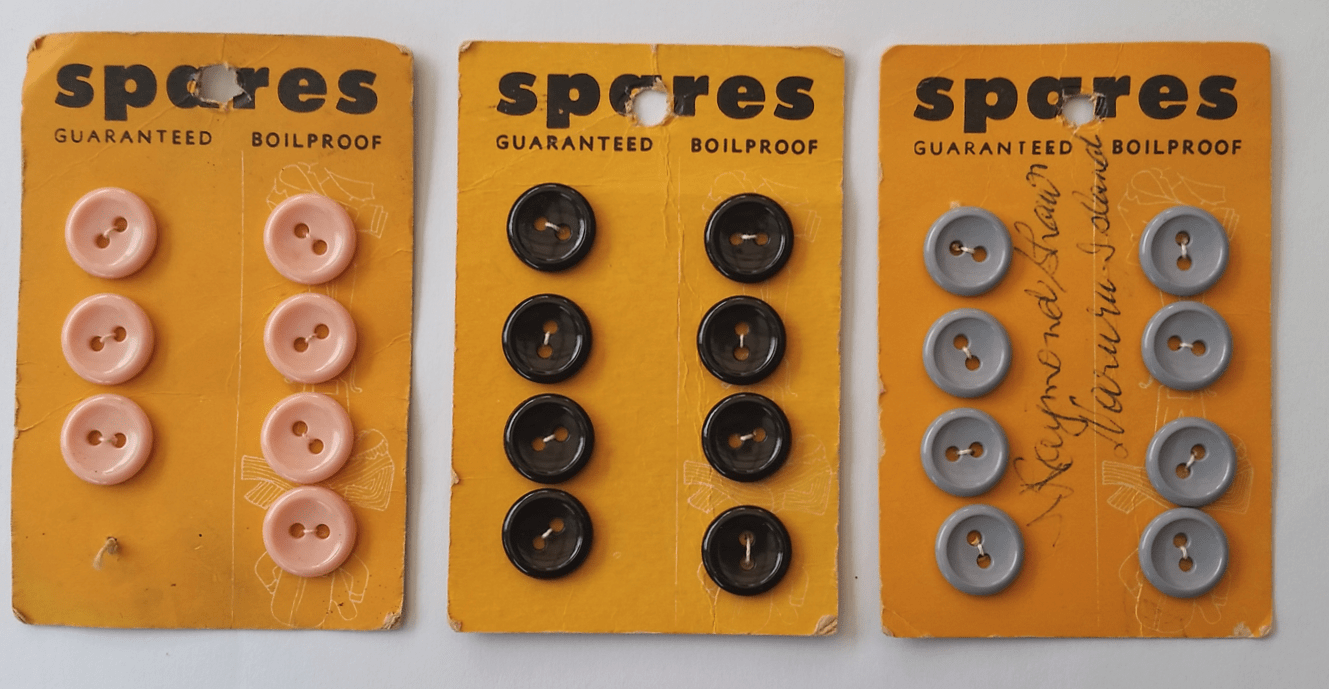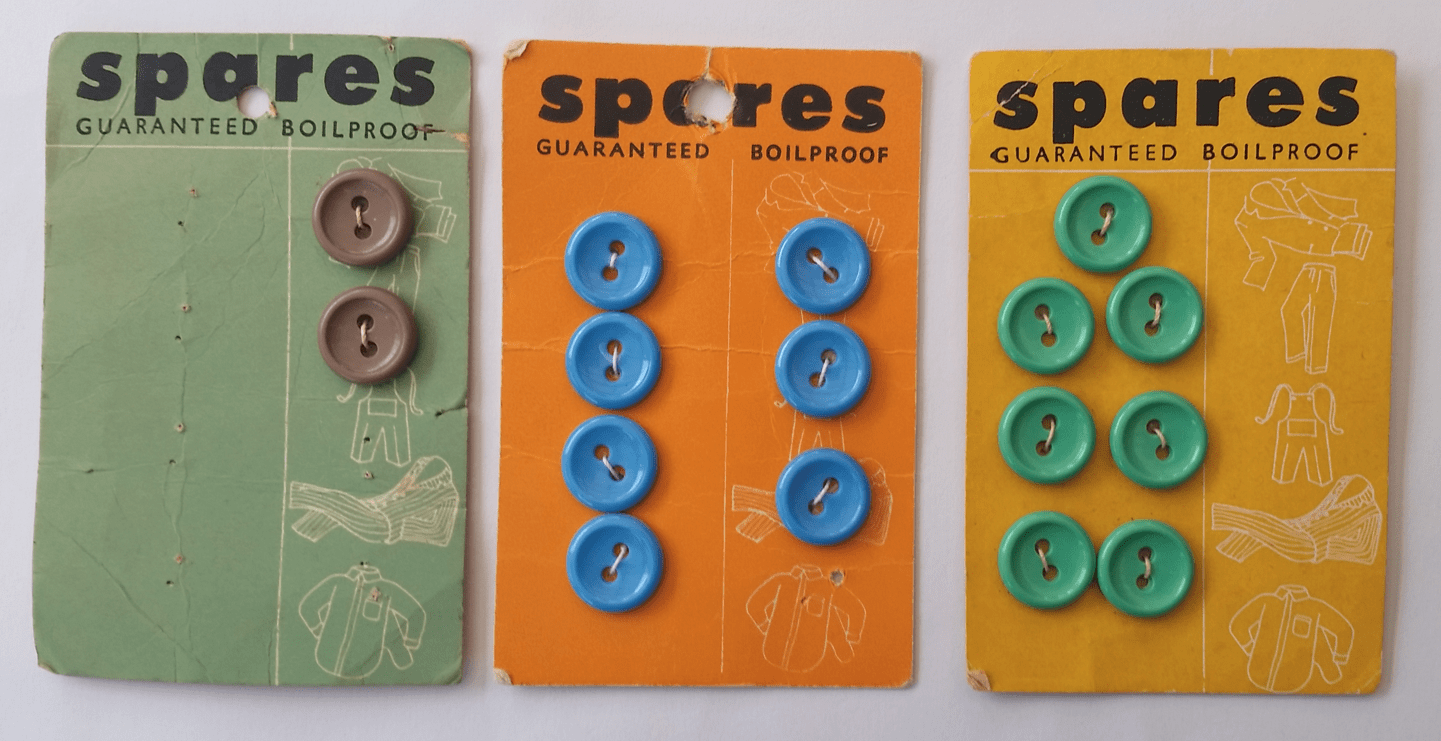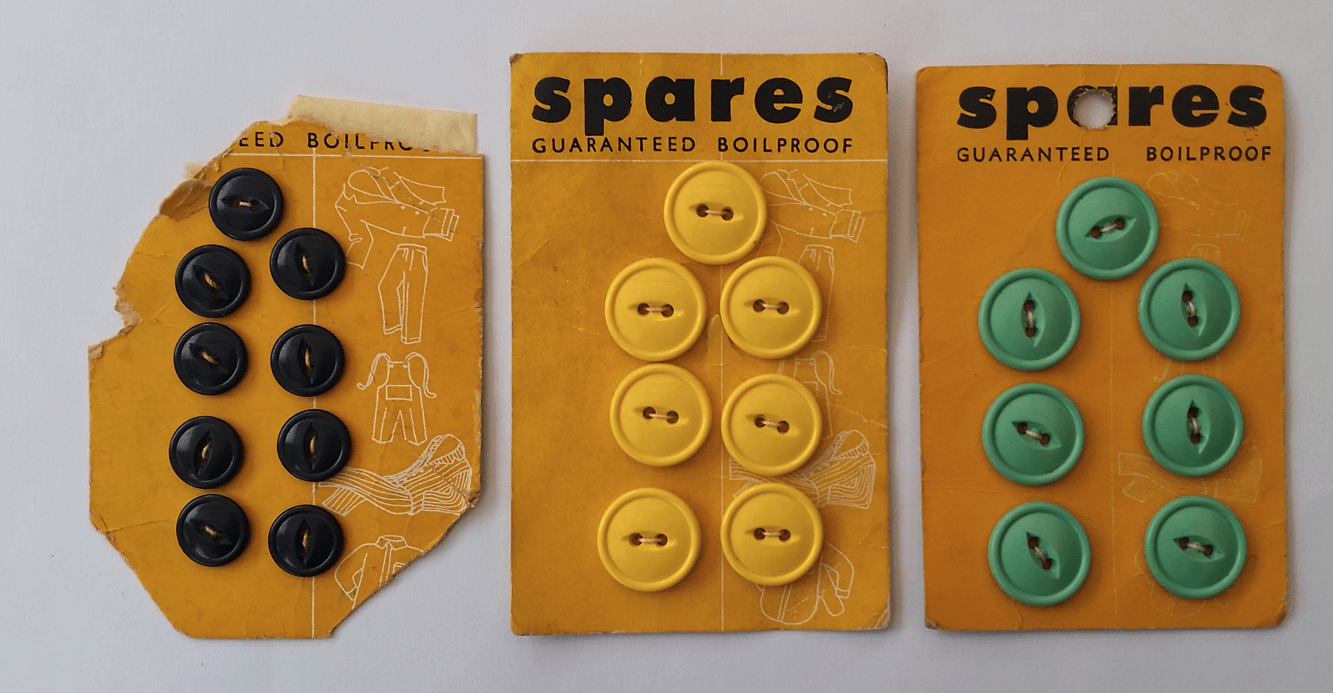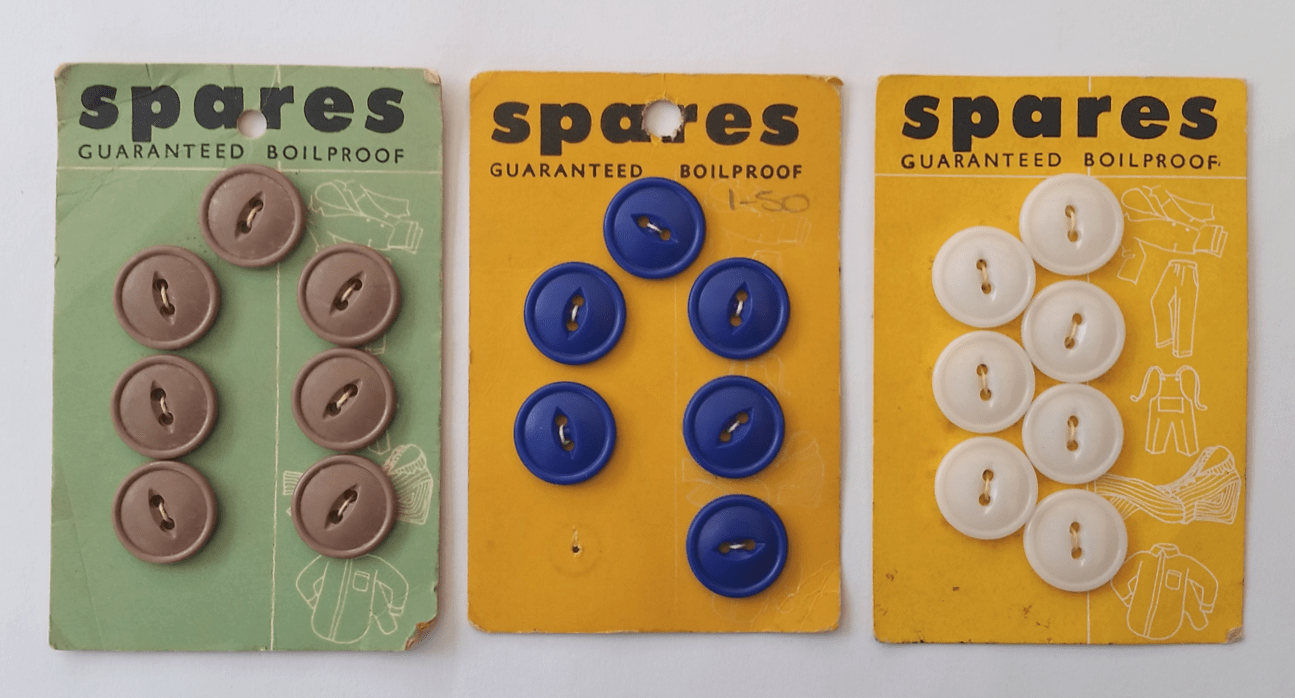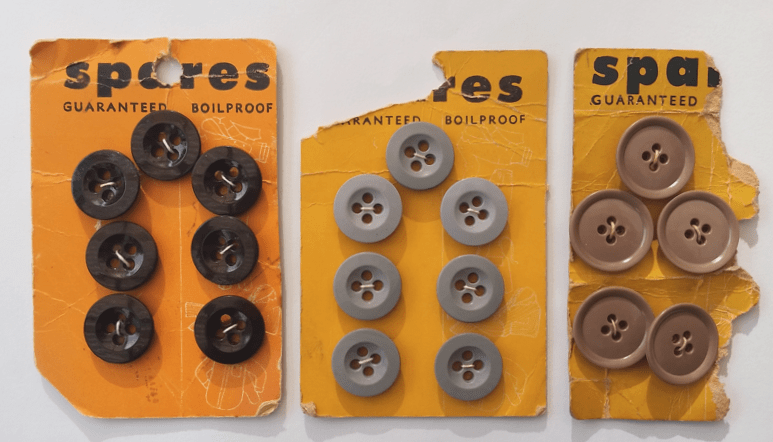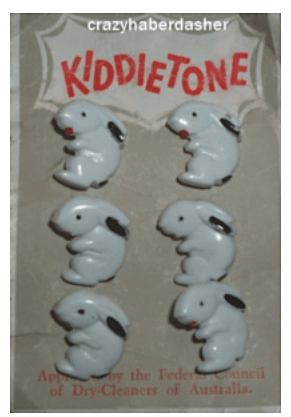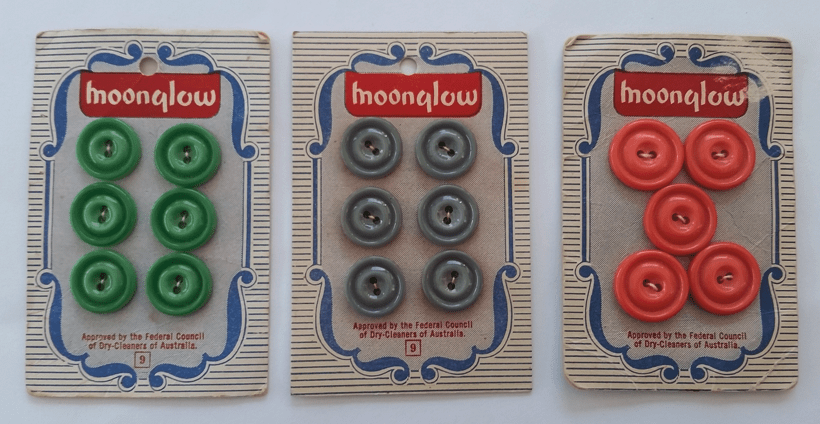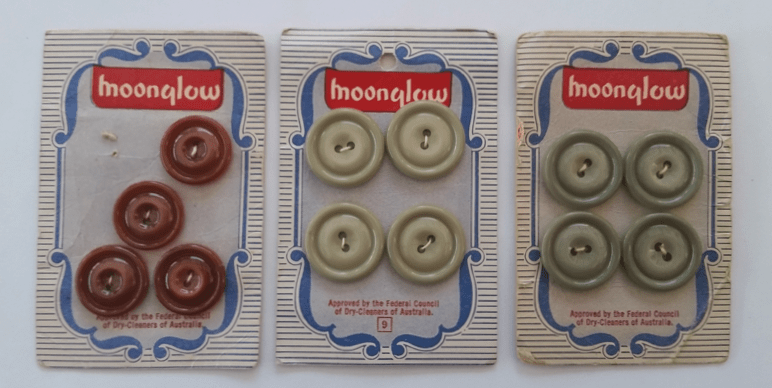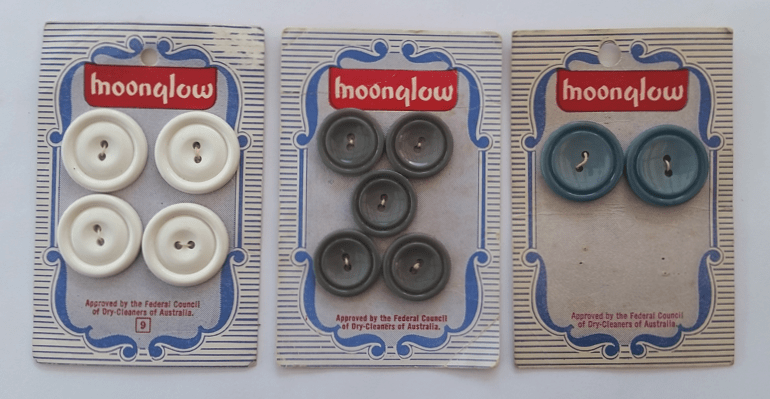Table of Contents
Woolworths Limited
http://www.woolworthslimited.com.au/page/Who_We_Are/The_Woolworths_Story/How_We_Were_Founded/
http://www.austbuttonhistory.com/15th-september-2020/
The ‘Woolworths Stupendous Bargain Basement’ opened in Sydney in December,1924. In 1957 they opened their first supermarket, and by 1959 the 300th store had opened.
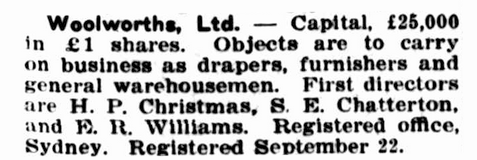
Daily Commercial News and Shipping List (Sydney), 25th September 1924 page 5.
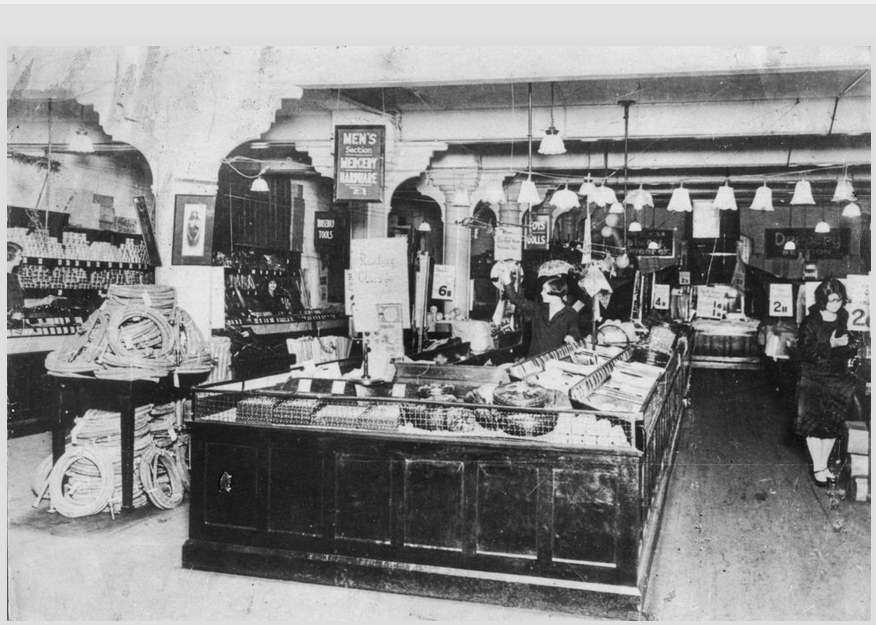
The City of Sydney Archives #048\048051. The first store shared the basement of the Imperial Arcade with a newspaper and billiard room, but was cheap!

The Sun (Sydney), 4th December 1924 page 15.
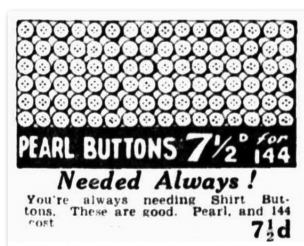
The Sun (Sydney) 19th April 1928 page 15. You must have gone through buttons to need to buy a gross!
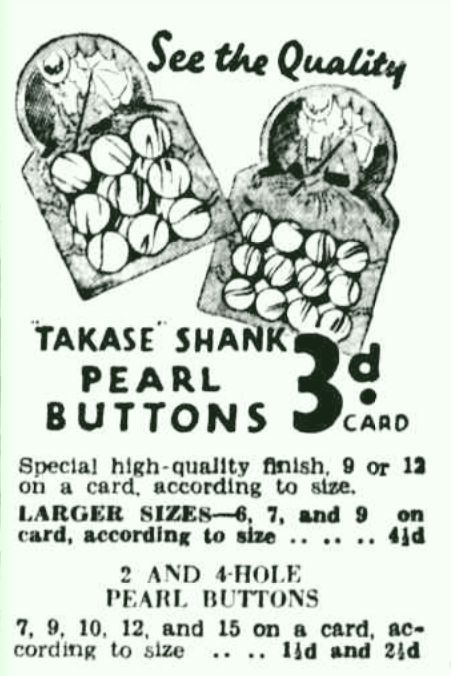
The Sun (Sydney) 8th August 1935 page 21.

The Telegraph (Brisbane), 9th May 1928 page 11.
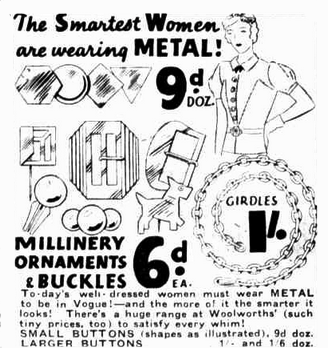
The Sun (Sydney), 18th May 1933 page 17.
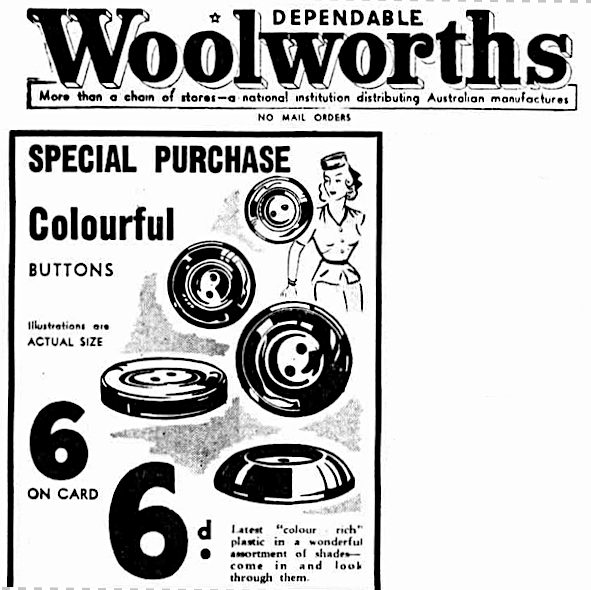
The Sun (Sydney), 13th March 1947 page 6.
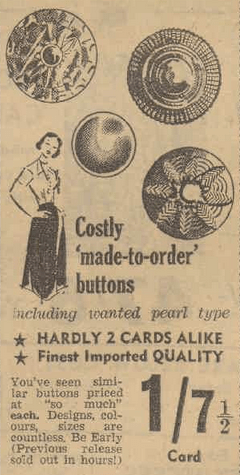
The Daily News (Perth), 9th October 1952 page 12.
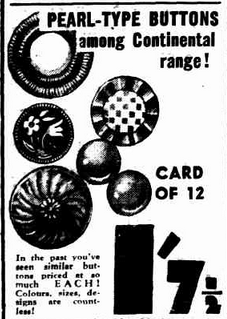
Warwick Daily News (QLD), 8th july 1954 page 5.
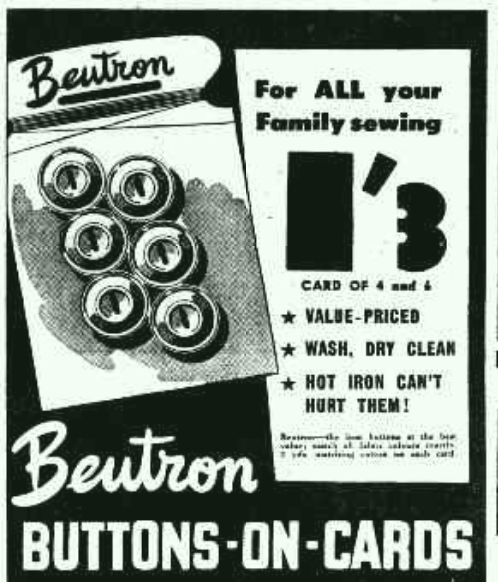
News, 21st July 1954 page 13. On sale at Woolworths.
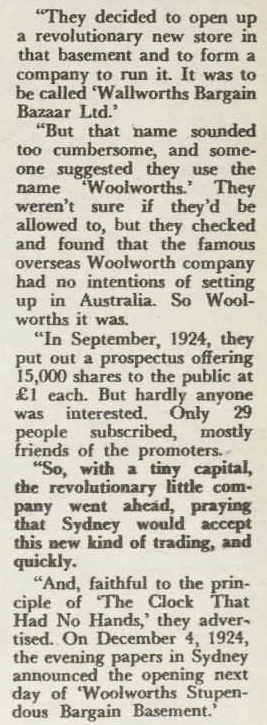
From an article in the Australian Women’s Weekly, 28th June 1967 page 16.
Variety/bargain stores such as Coles and Woolworths had done well, even through the Great Depression. The war limited supply of good, but it was reported that this was easing in March 1946. Woolworths then controlled over 100 stores. By 1956 they had over 200 stores, and by 1967 they had nearly 1000 stores, employing nearly 30,000 Australian and New Zealanders.
Like Coles, they invested in home brands. The first, in 1928, was simply called Woolworths’. Later came Chevron, St Mark’s, Tania, Grandway, and Home Brand.
From the early 1950s they sold house-branded cards of buttons supplied by General Plastics, including Spares, Boilproof, Moonglow, Hi-Style and Kiddietone. Not only did they have multiple brand lines of buttons during this decade, but each brand line had 2 -3 card variations! Consistency in marketing was not Woolworths’ strong suit.
Spares: 1950s
These were the first “house brand” of buttons to be sold. The illustrations of pyjamas, pants, overalls, jackets and shirts on the card indicate that they were intended as utility buttons. The back was printed “approved by the Federal Council of Drycleaners around 1954 (General Plastics did not mention the Federation until 1954 in advertising).
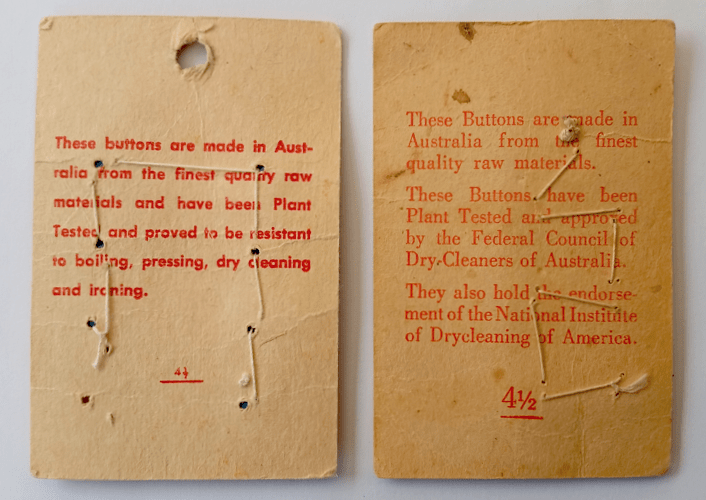
The card on the right references the Federal Council of Dry Cleaners of Australia. This happen from 1954.
They had a cute graphic down the side showing items of clothing. However this lead to confusion for the women sewing on the buttons. Spread the buttons out evenly and cover the graphics, or squeeze the buttons down one side to show the graphics? There were also several colors of background used.
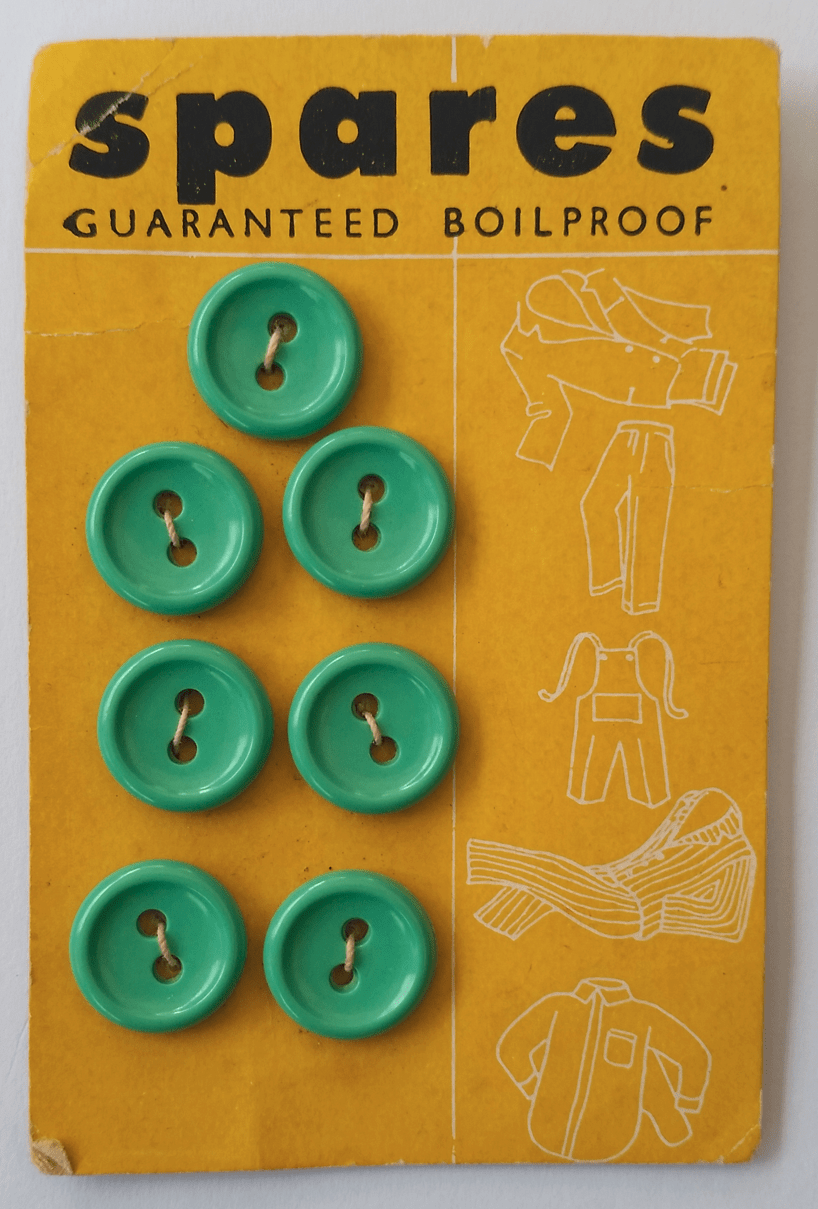
Buttons sewn to one side to leave graphics uncovered.
Around 1958 the name ‘Woolworths’ was added. (Woolworth adopted added thread in 1958 which dates these.) They graphics were moved to make it clearer where to sew the buttons! This looked smarter.
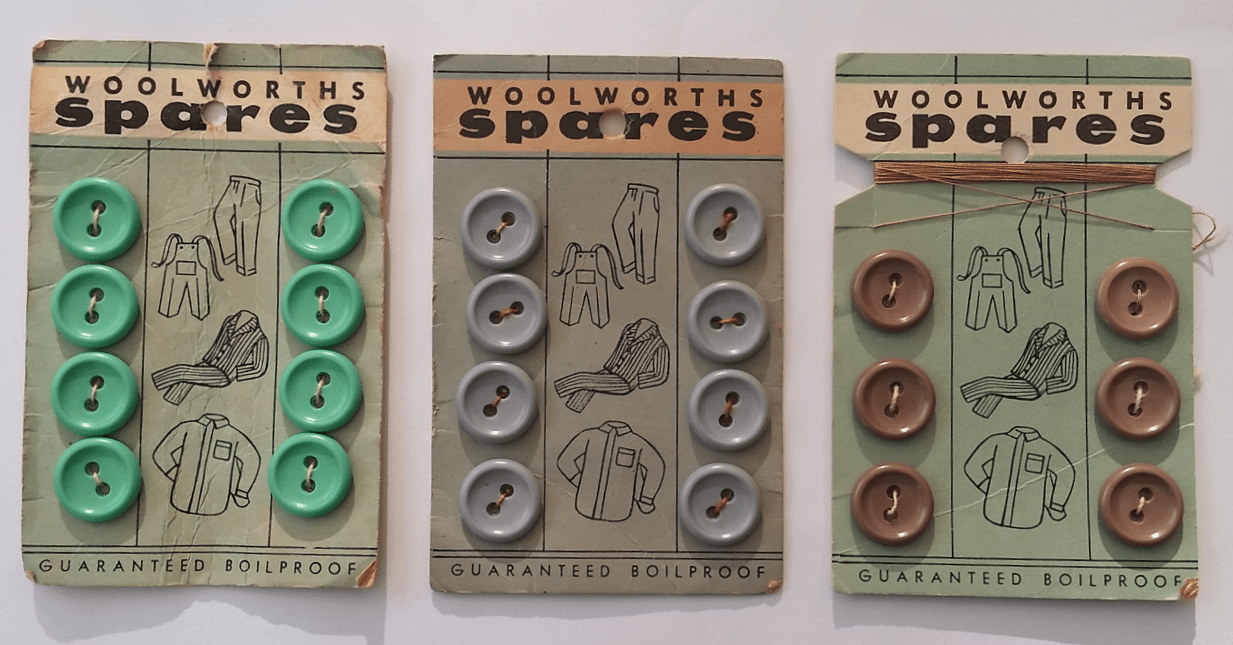

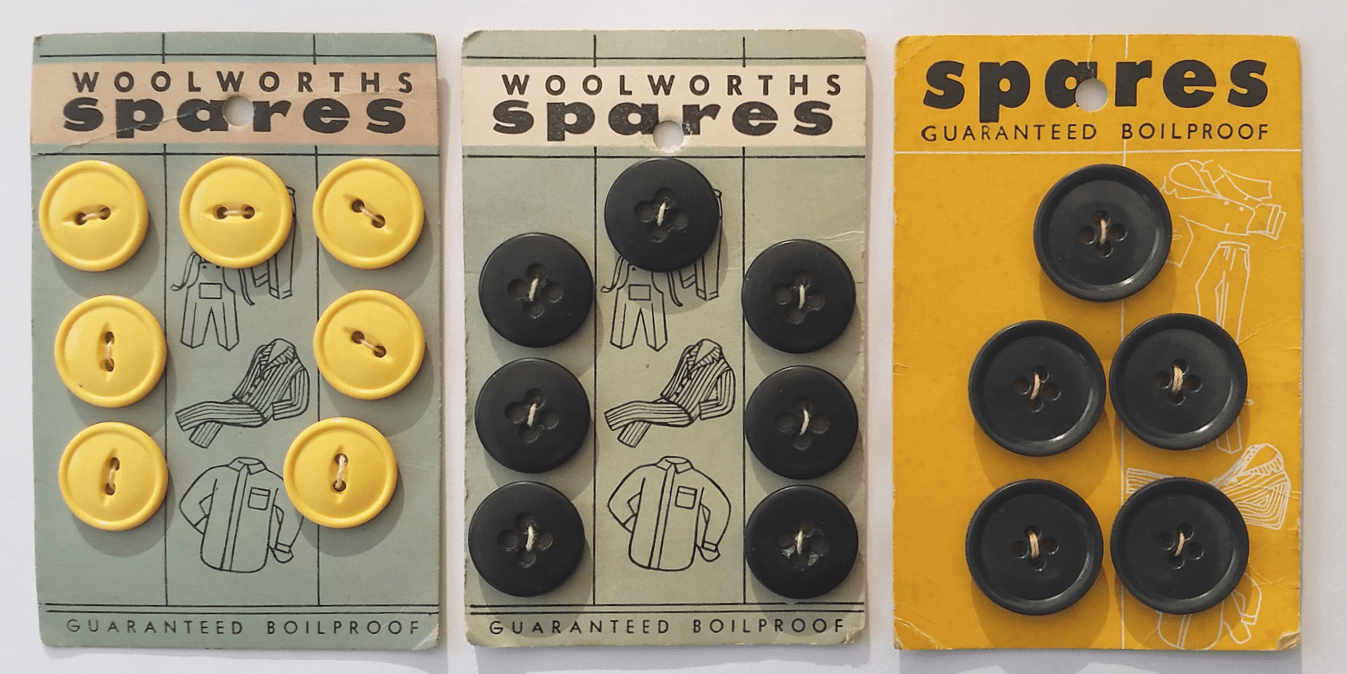
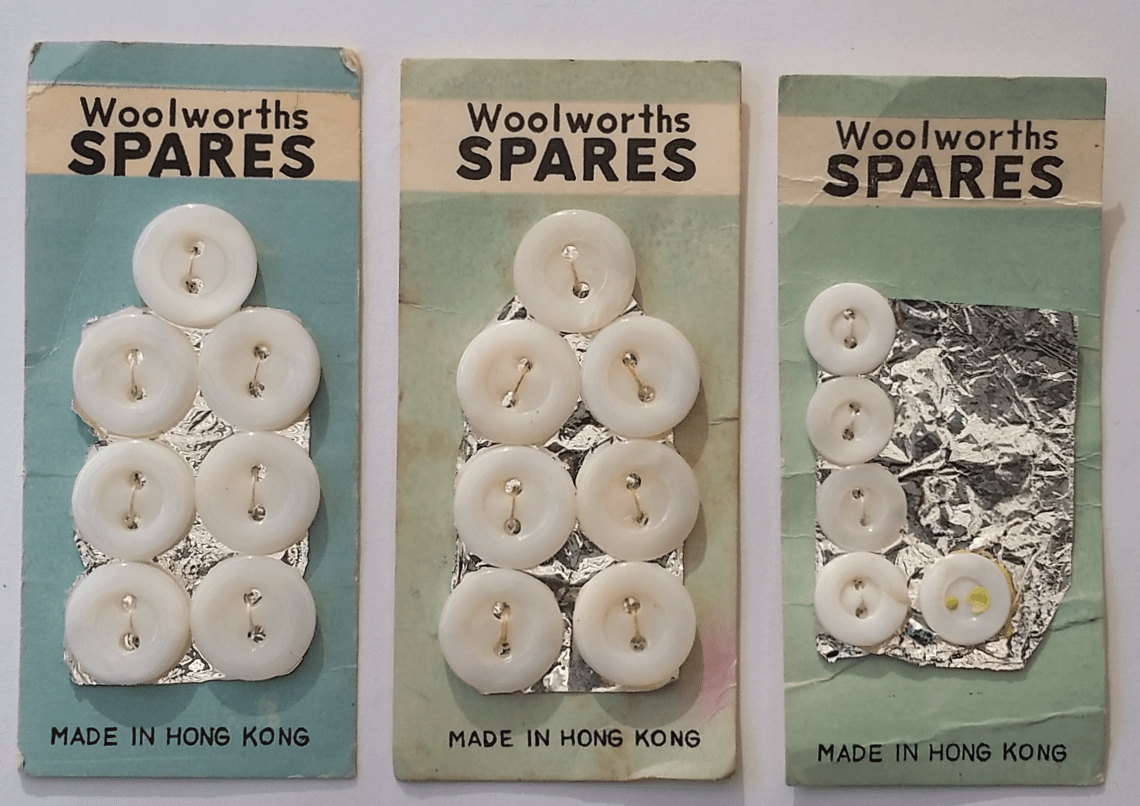
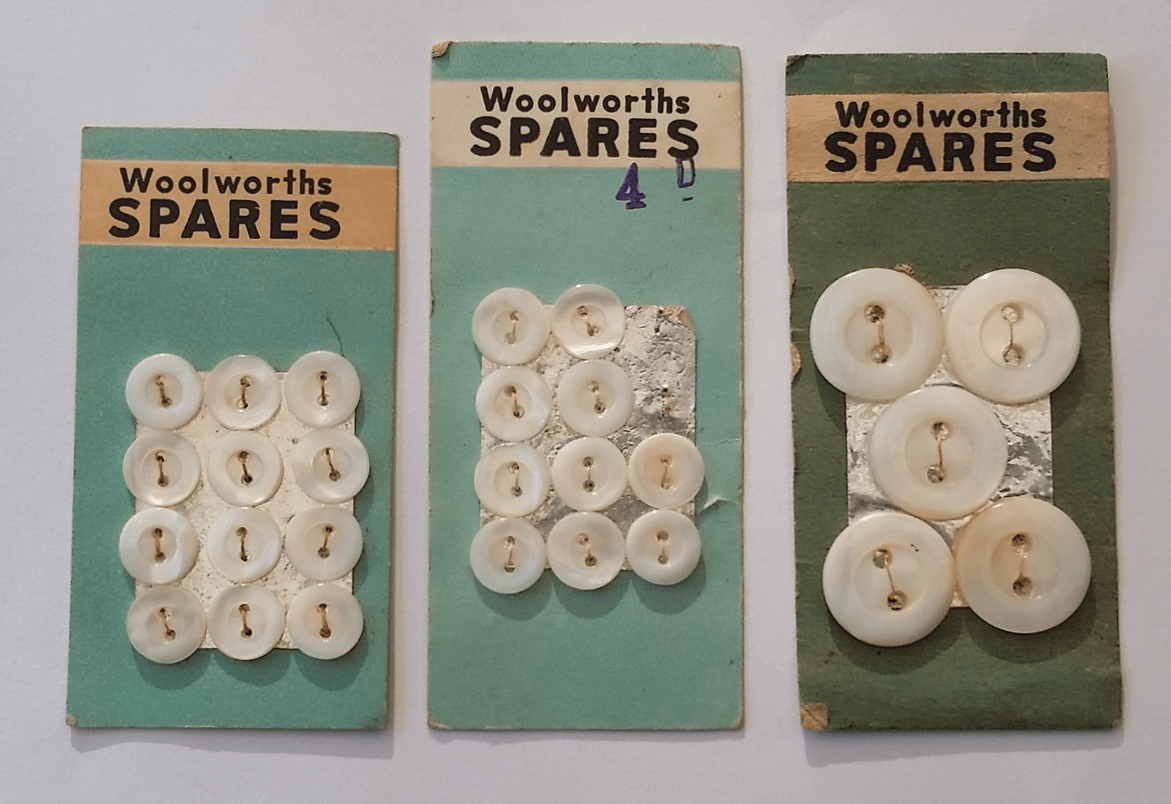
Two of these are marked “Made in China” on the back.
Kiddietone: Mid 1950s
These cards feature hand-pained squirrels and lambs.
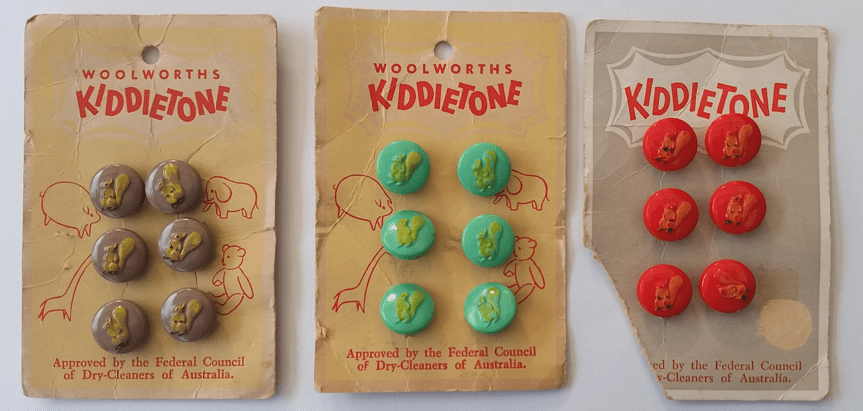
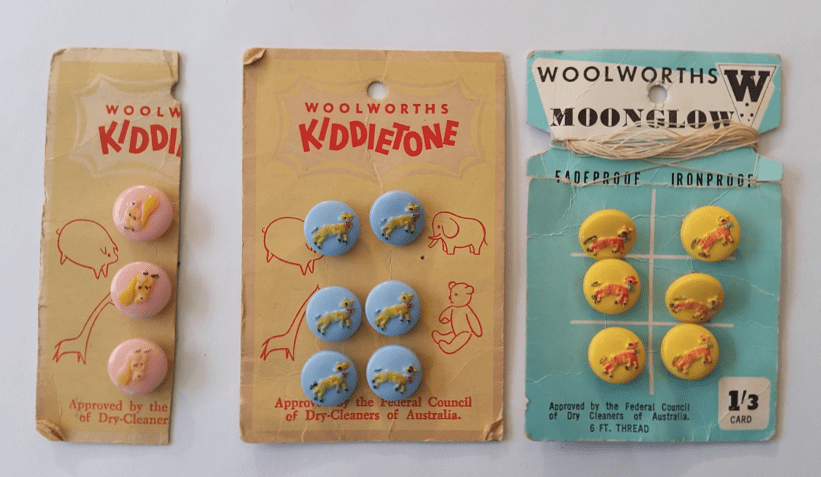
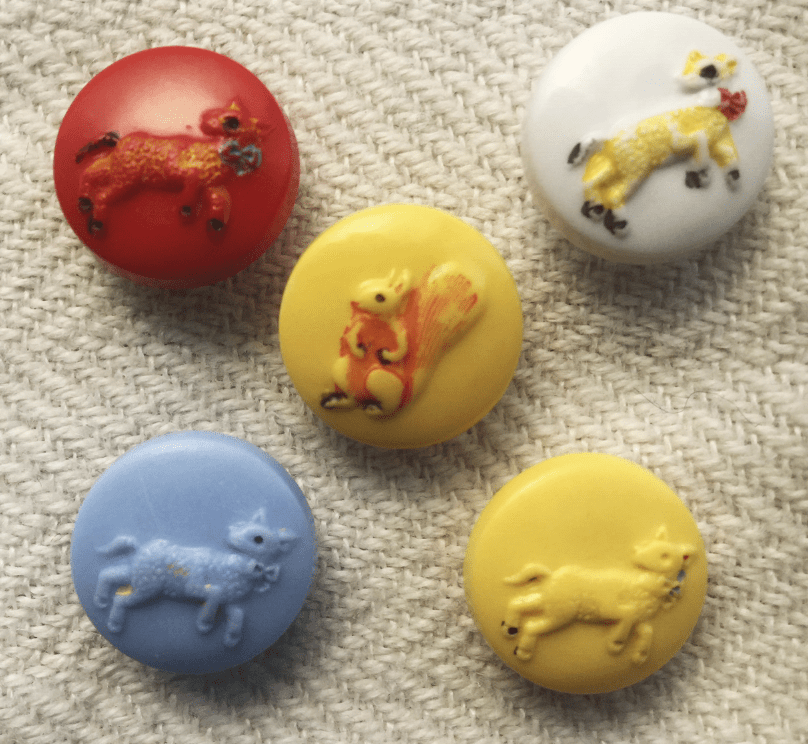
Hi-Style: Mid 1950s
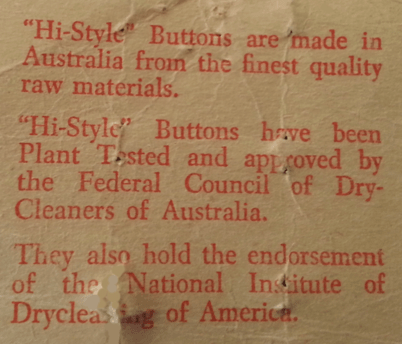
The mention of the Federal Council of Drycleaners dates these cards from 1954 onwards.


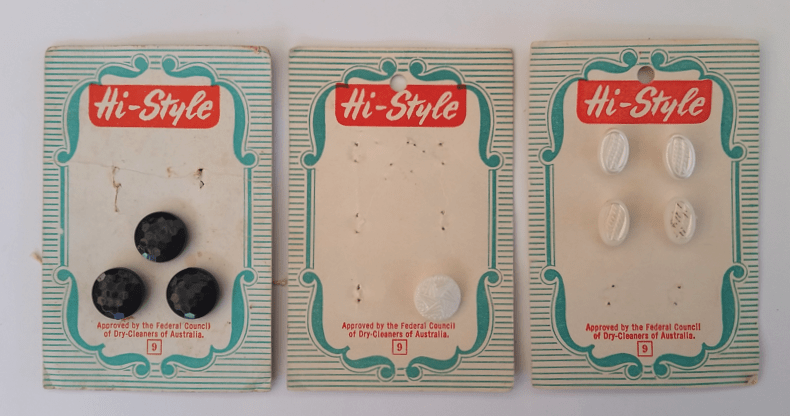
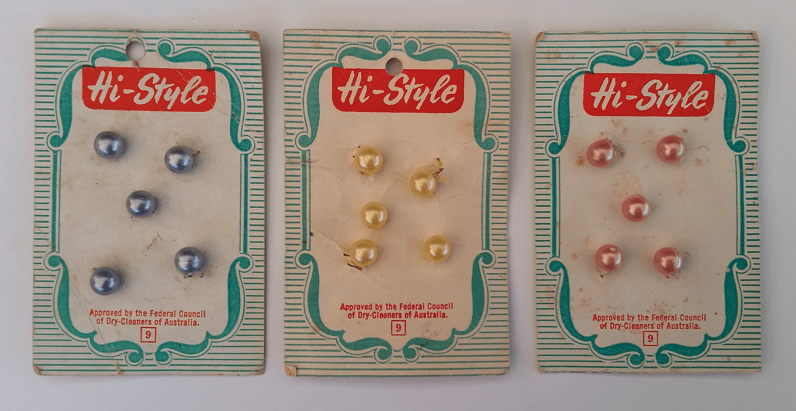
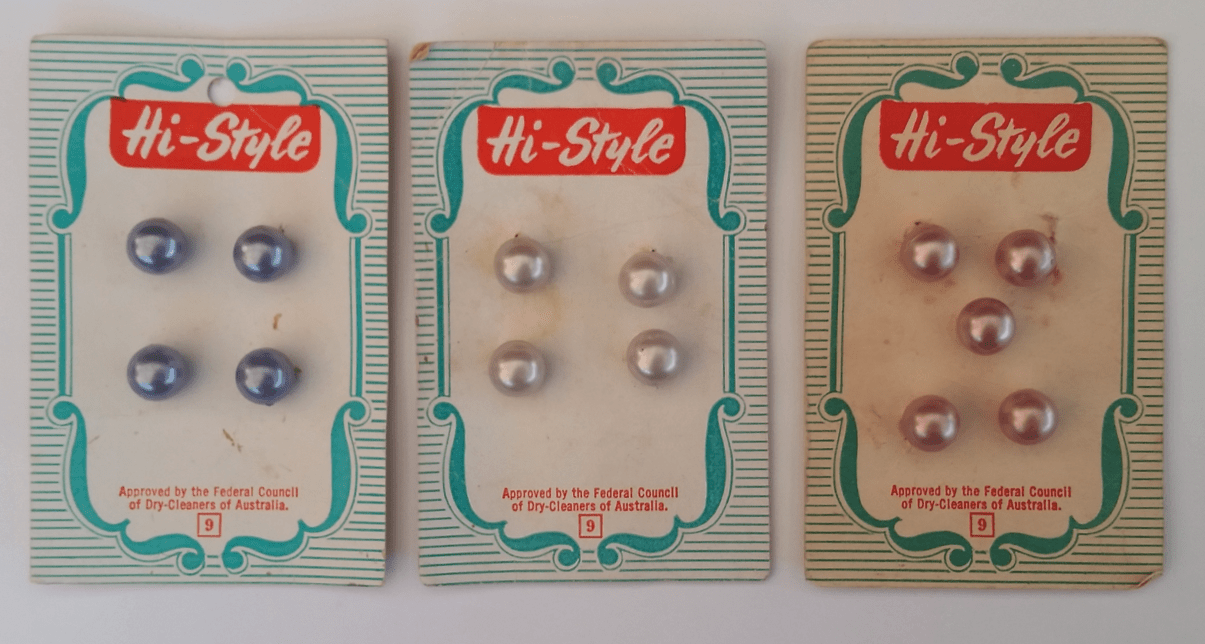
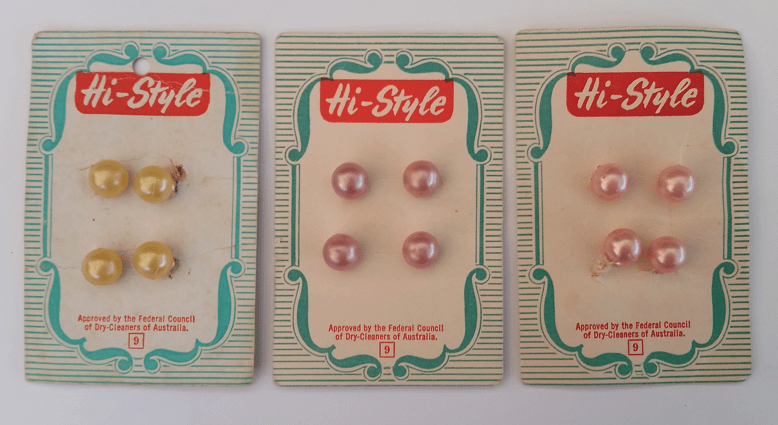
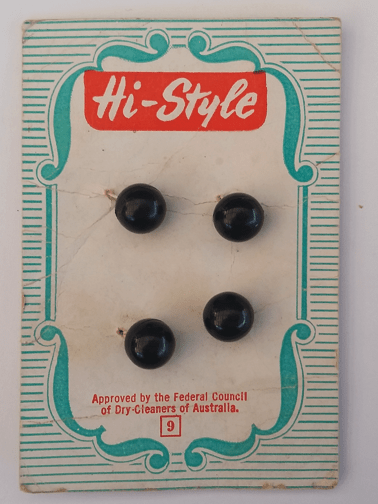
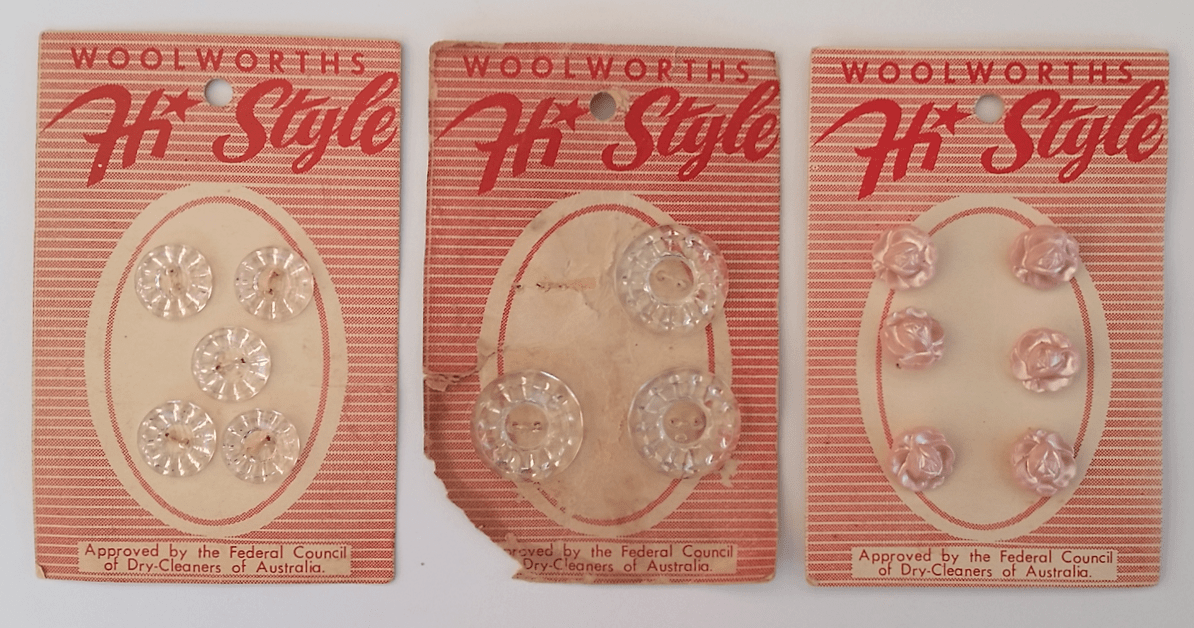
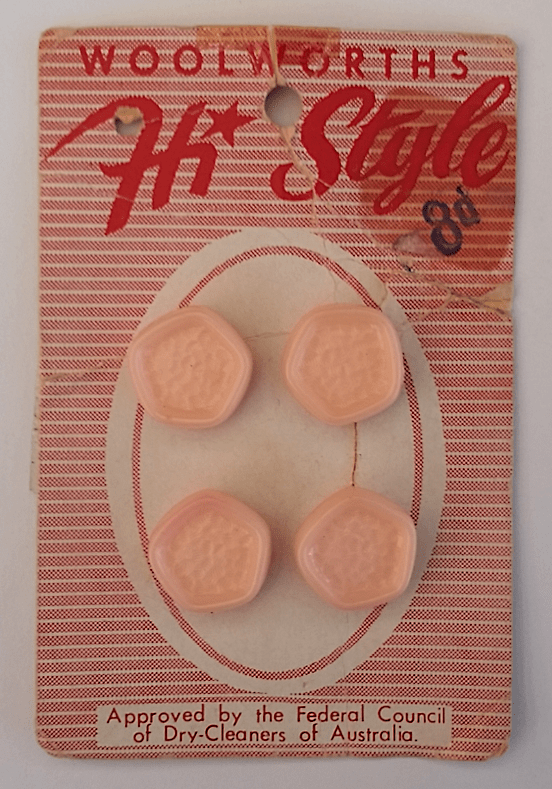
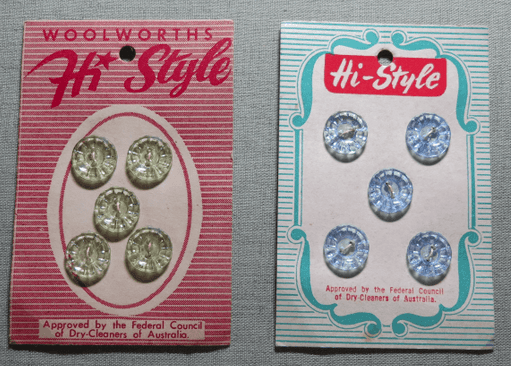
Boilproof: Mid 1950s
For some reason they sold some larger than standard cards, then changed the graphics completely.
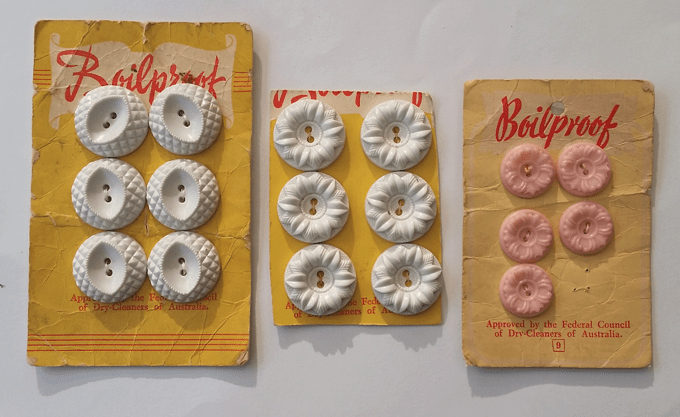
The larger than standard card (7×11 cm) is on the left.
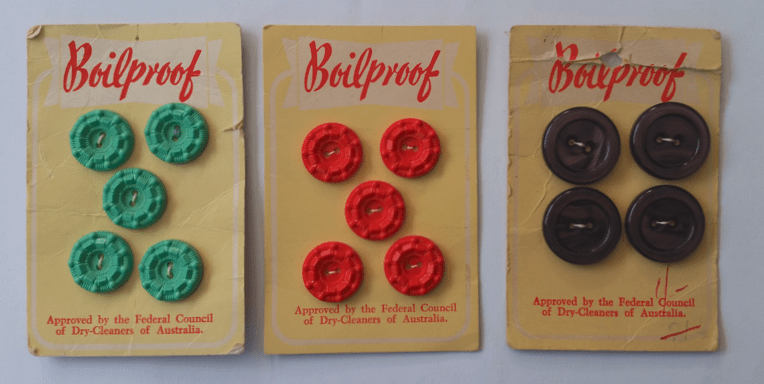
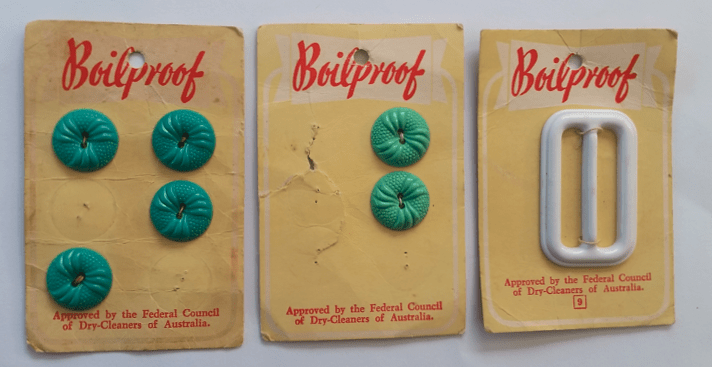

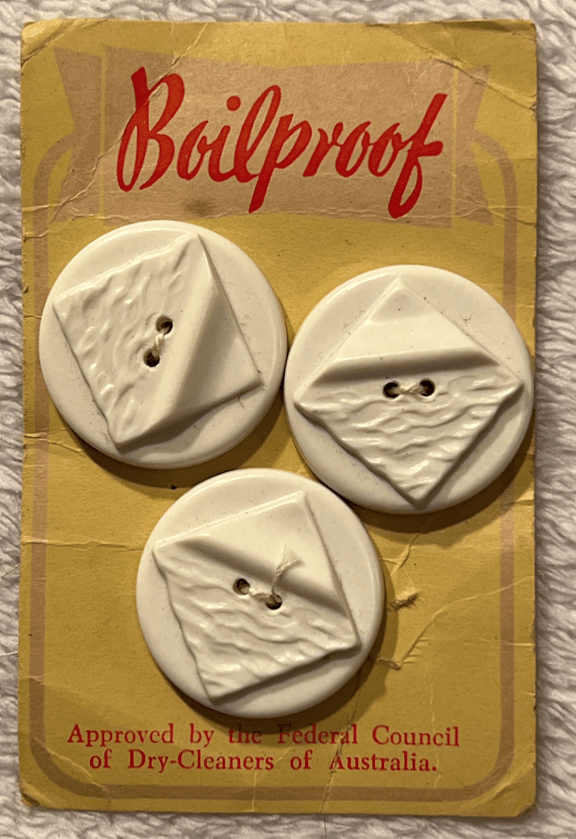
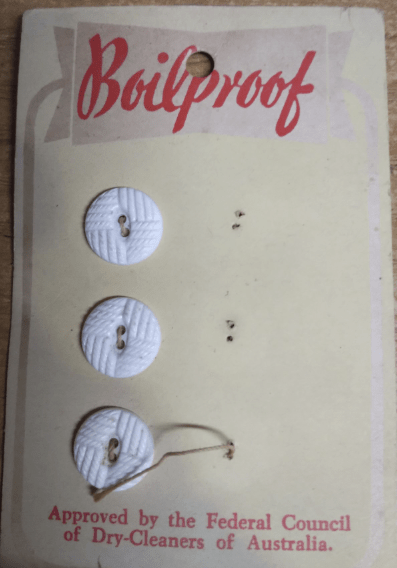

They sold cards that copied G.Herring’s feature of added cotton in 1958.
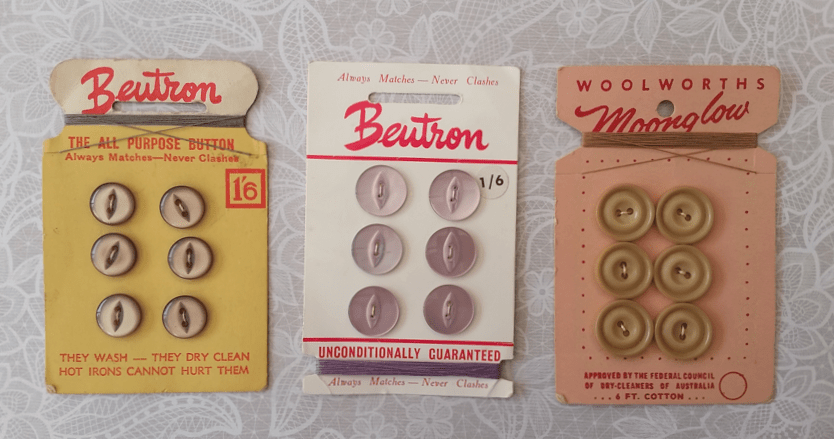
The card on the left had been registered in 1948, and marketed from 1949. Around 1960 the card design changed to that in the middle. it is possible it changed because of General Plastics copy of this card for Woolworths. they may have felt that putting the cotton at the bottom was more distinct. The card on the right is the culprit design.
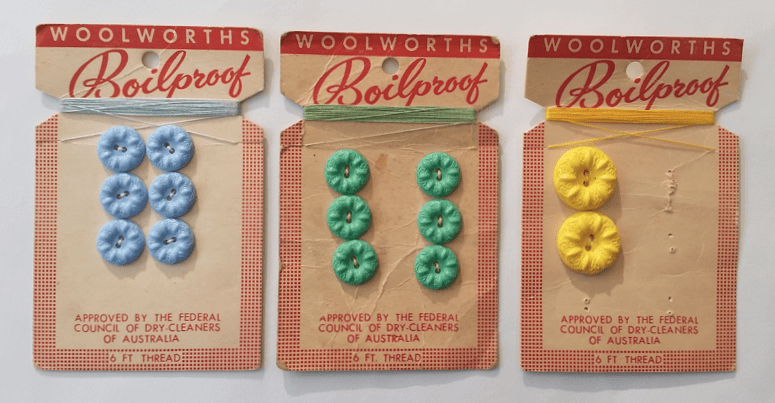
Competitor G. Herring took them (unsuccessfully) to court over this copying of their registered design.
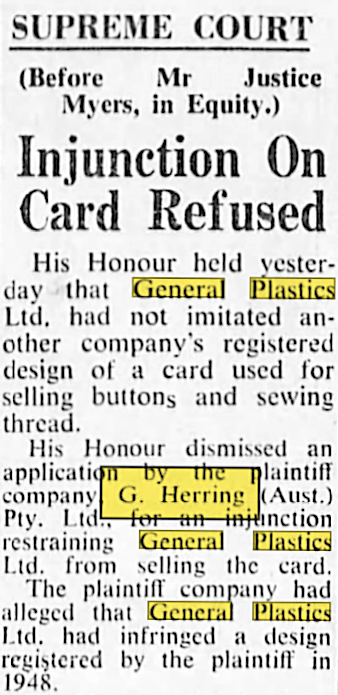


The Sydney Morning Herald, 14th September 1960 page 18. NB: The plaintiff registered the design in 1948, not 1958. This is a misprint.
Moonglow: mid 1950- late 1960s
This branding was used on several different cards.
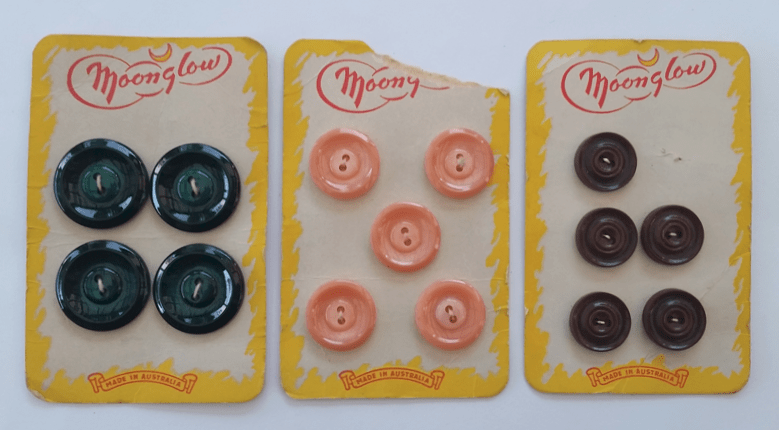
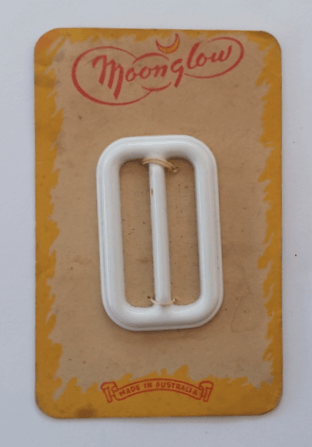

They then swapped to pink cards with added cotton, with 3 variations seen. Perhaps they used multiple printing firms?
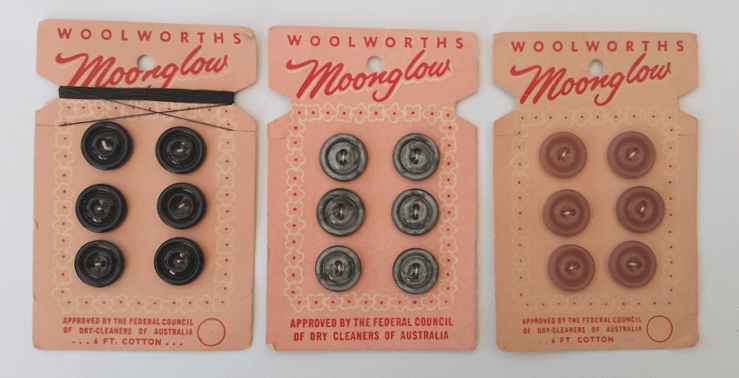
Two variations: with and without “6FT COTTON” printed at the bottom.
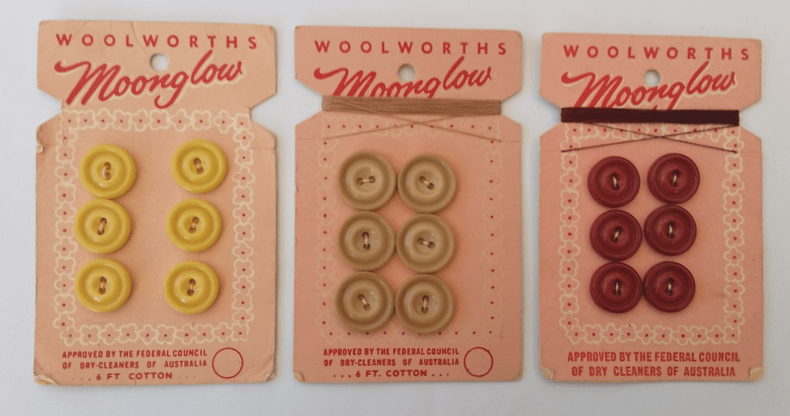
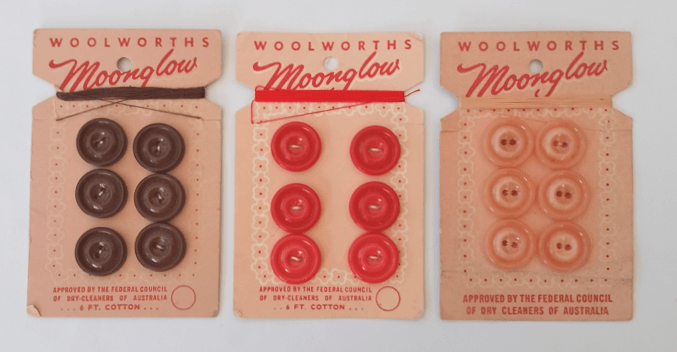
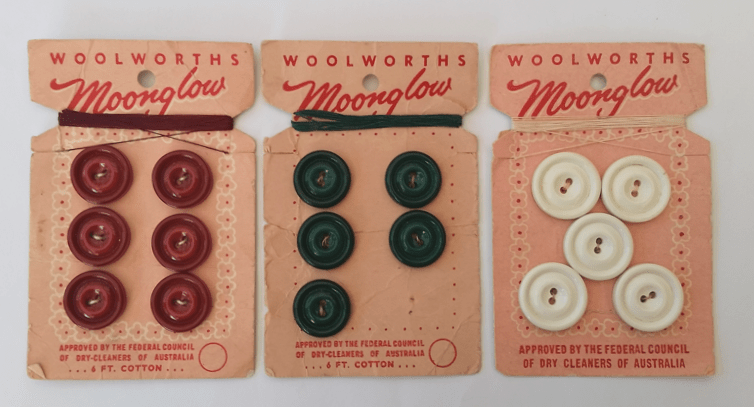
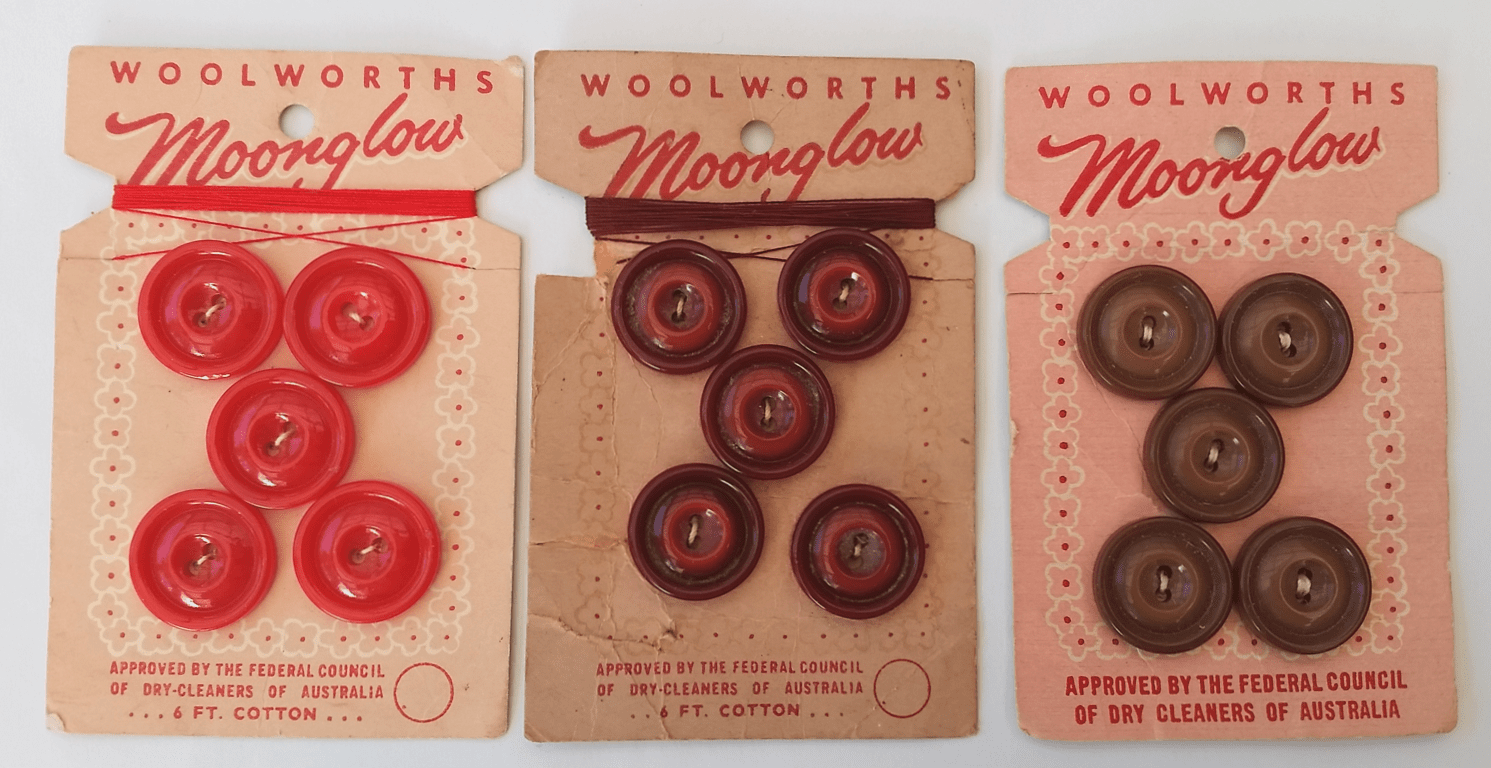
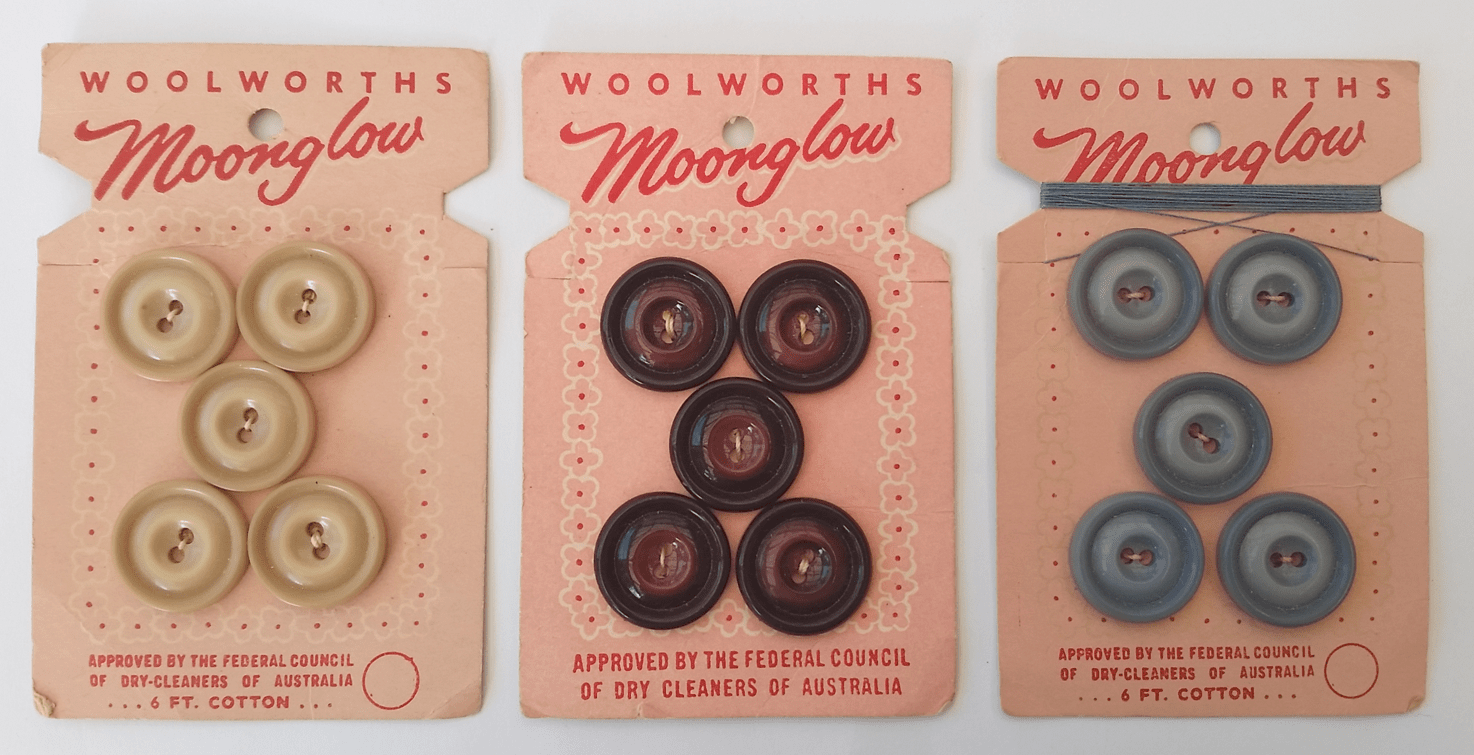
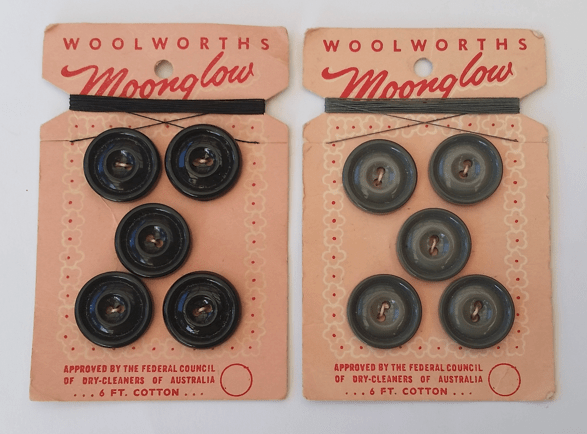
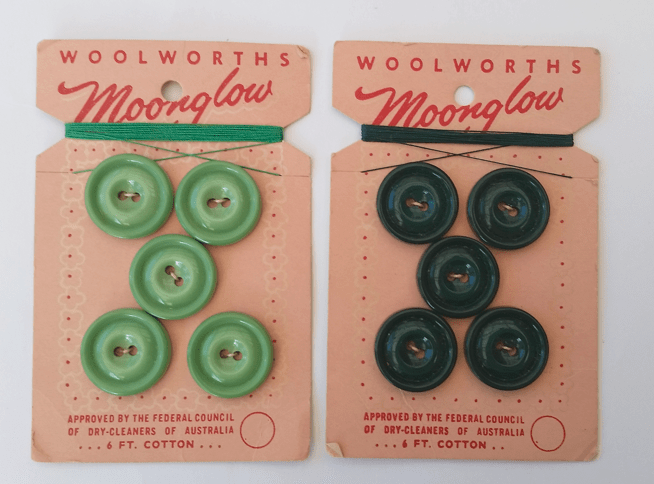
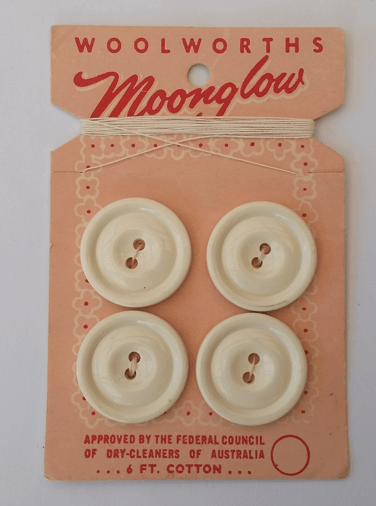
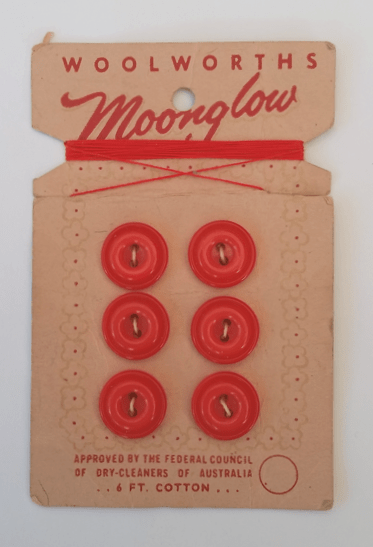

The third variation: “Guaranteed boilproof”.
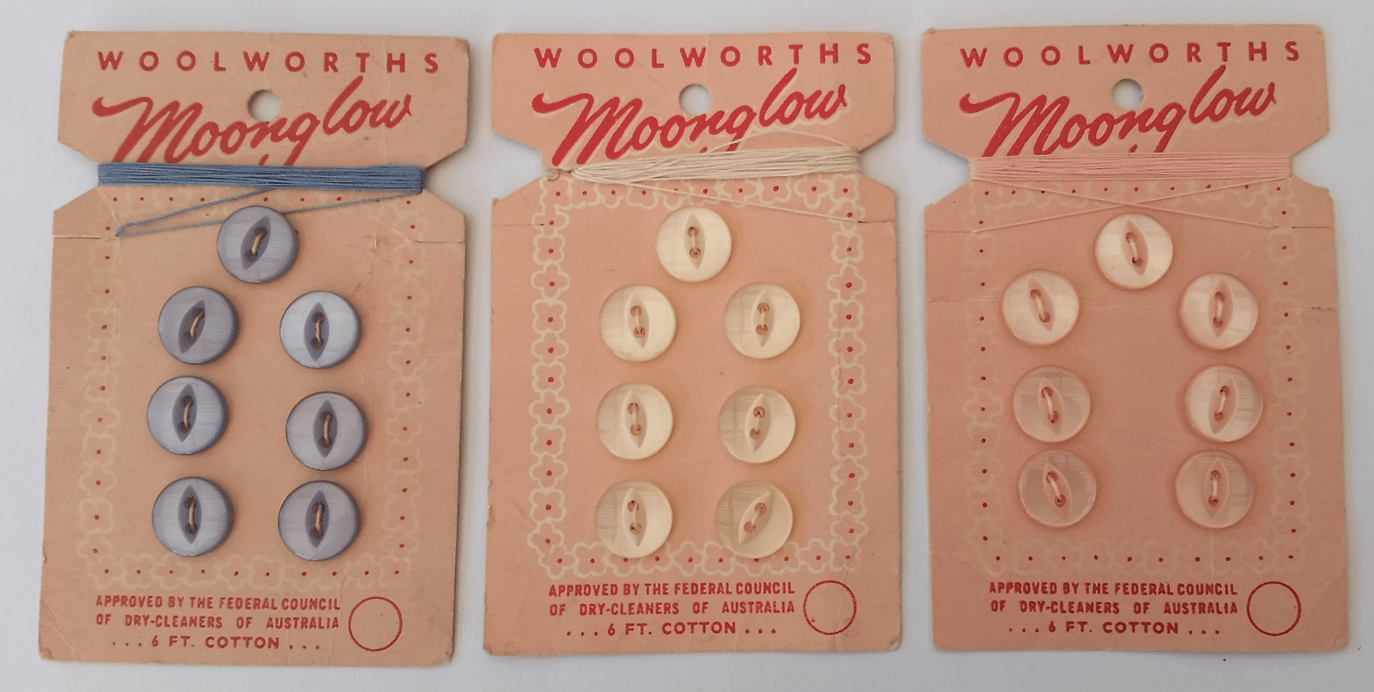
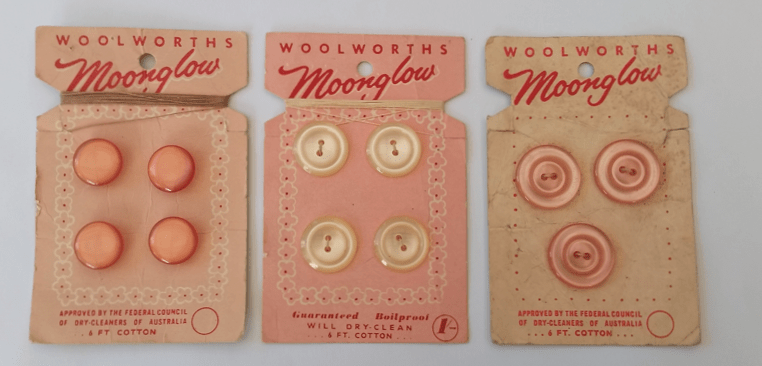
In 1958 Woolworths opened their first supermarket. From April 1960 a triangle surrounding the letter W and the Southern Cross was used as Woolworths’ new logo. This was printed on the cards of buttons. Some, perhaps the earlier versions, don’t have the price printed. From 1960-1965 these cards were coloured blue. For some reason, they switched to both yellow and white cards during 1966-67!

Australian Women’s Weekly, 25th April 1962 page 40. Hats and white gloves to visit the supermarket. Very nice.
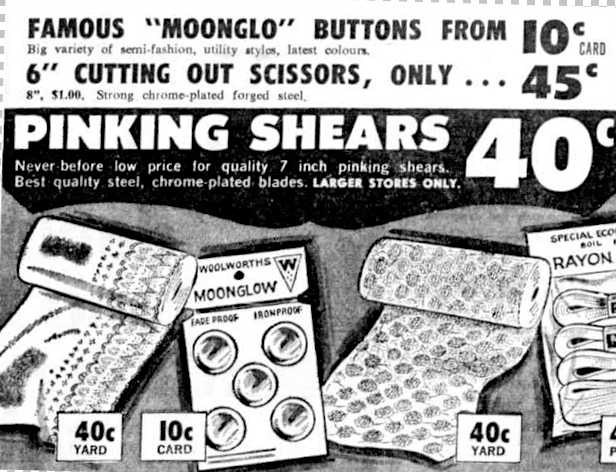
The Canberra Times, 28th September 1967 page 4.
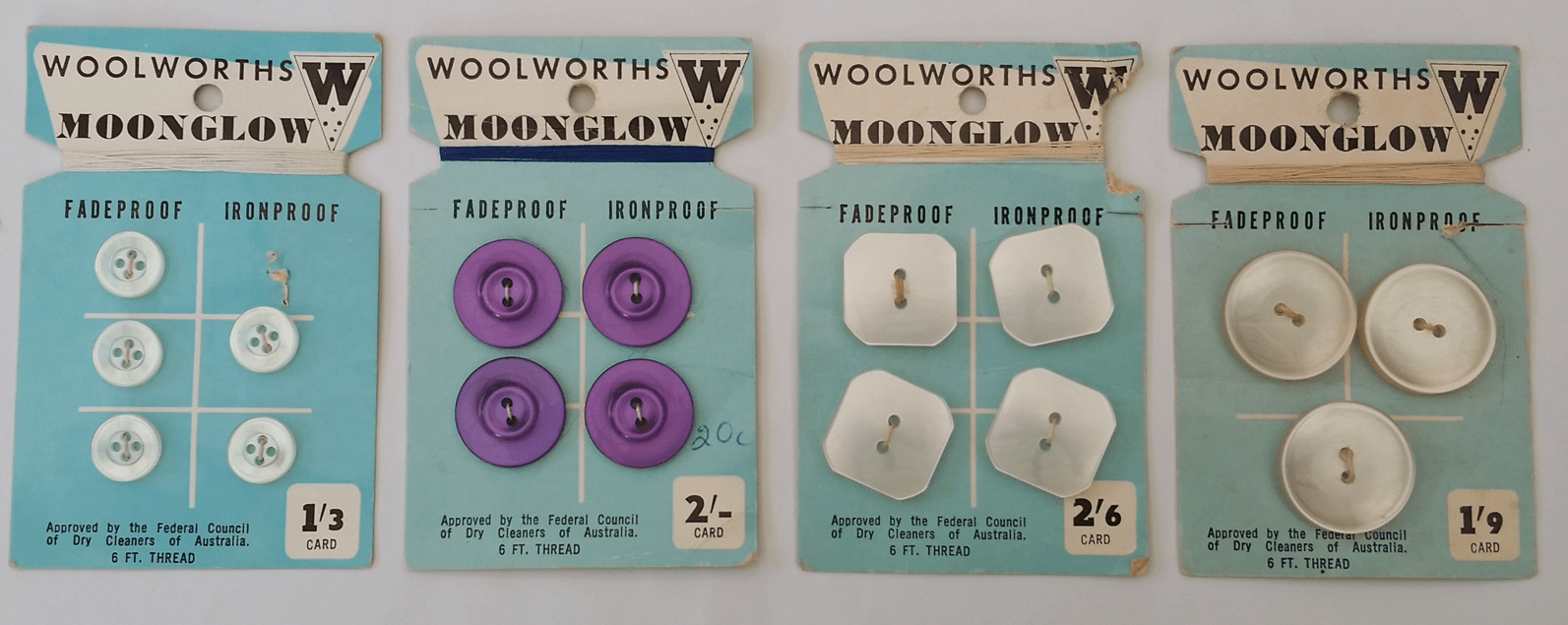
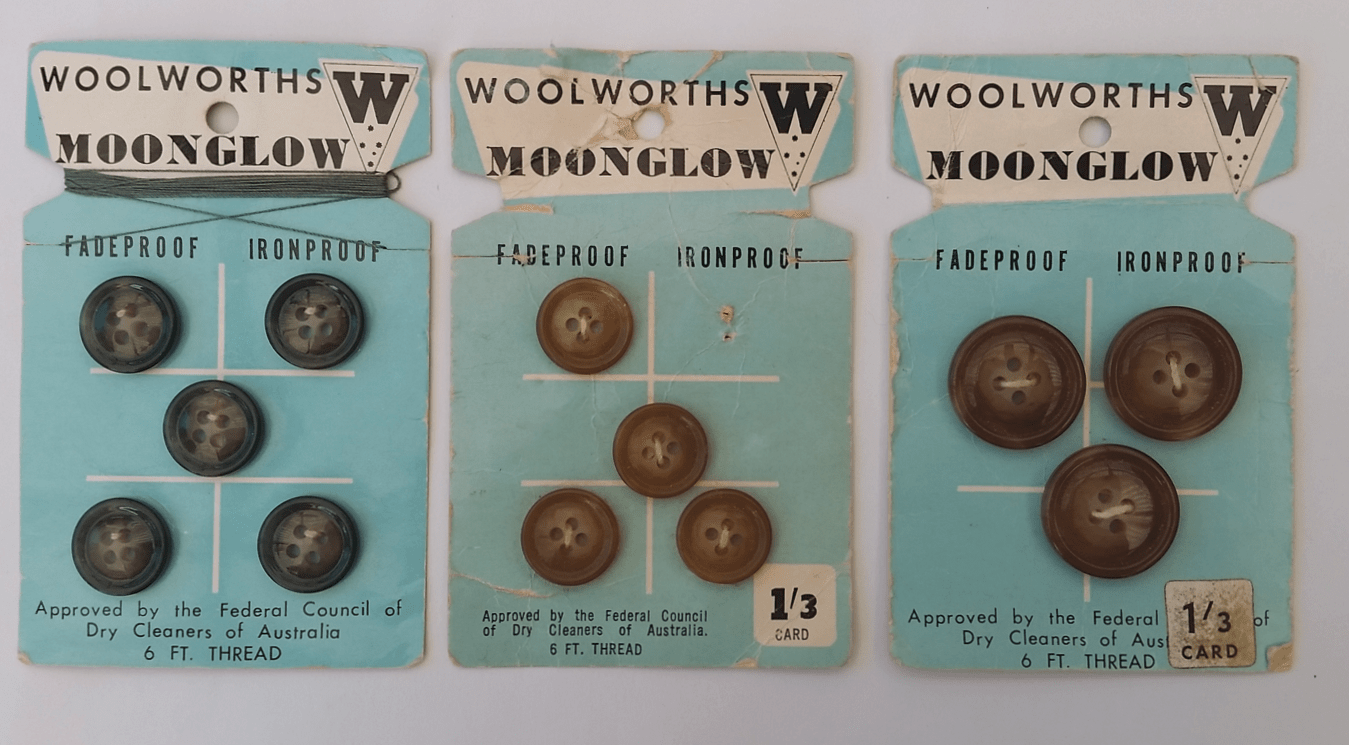

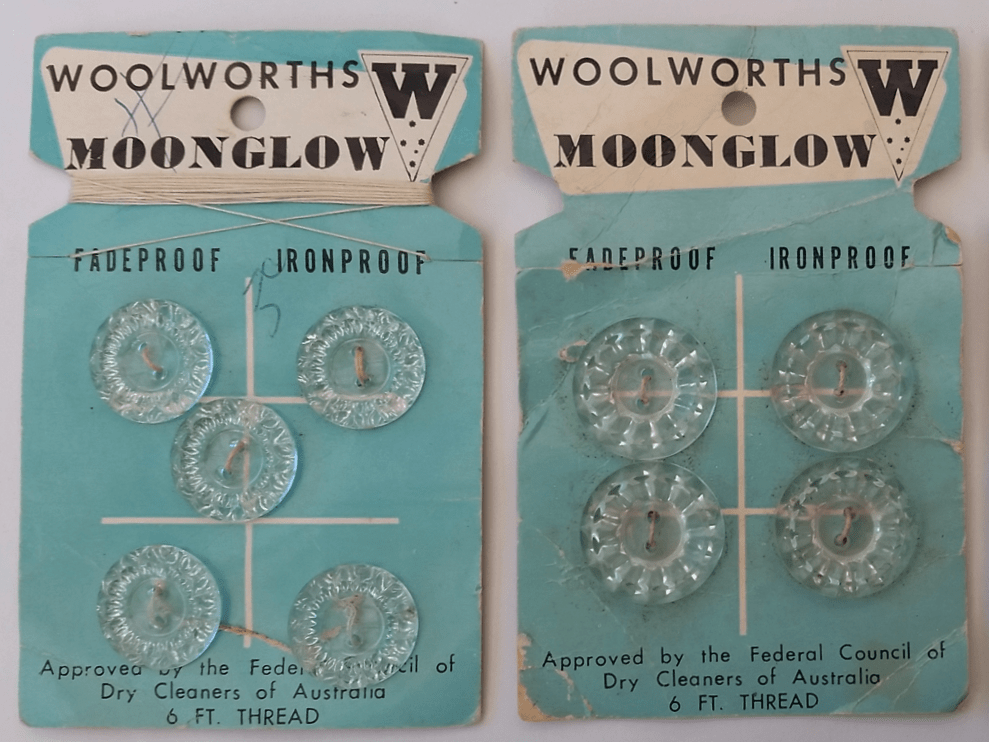

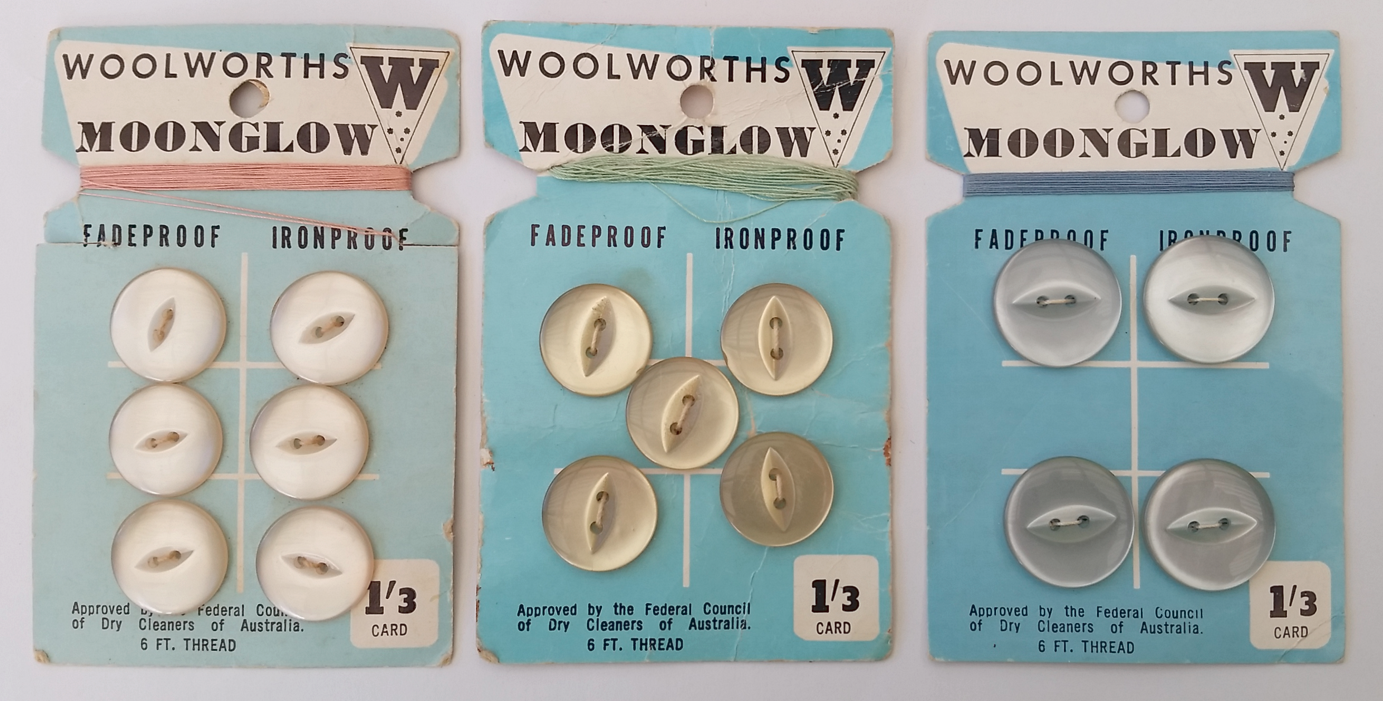
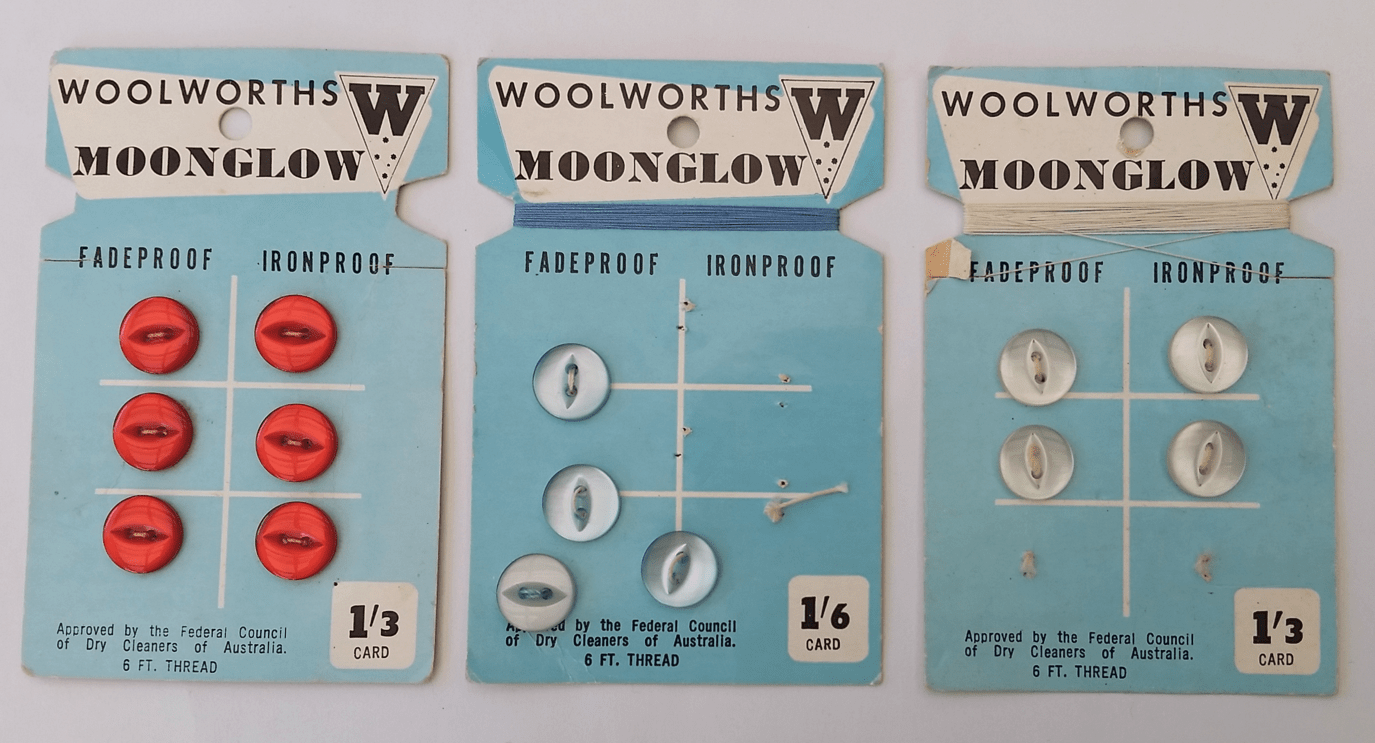
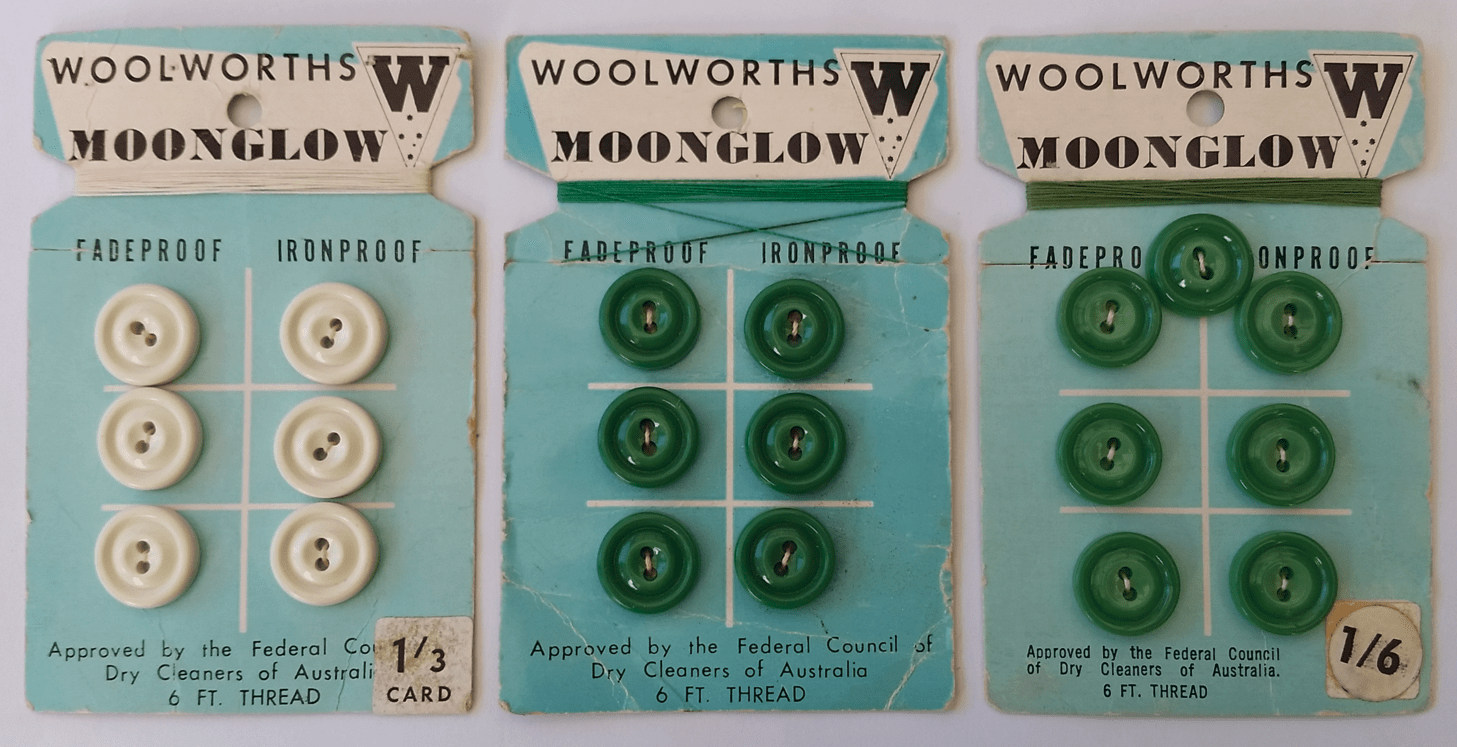
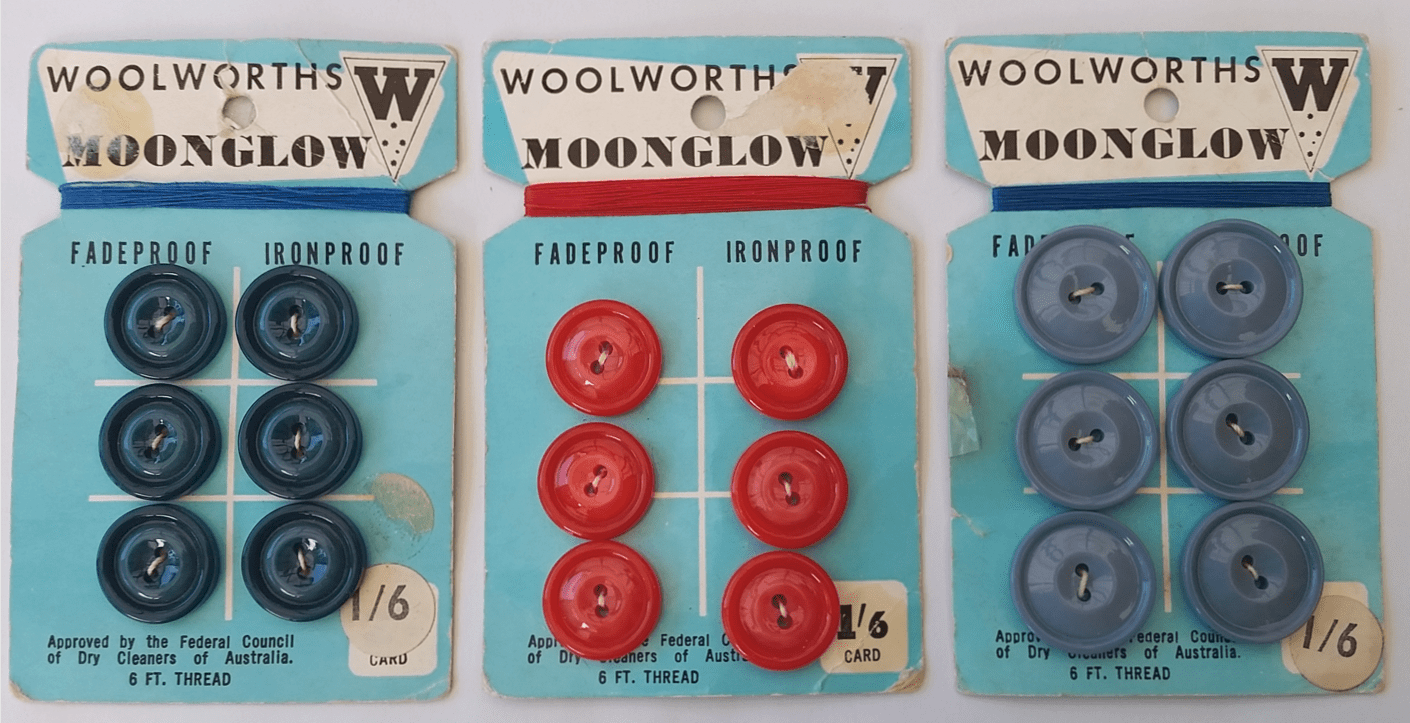
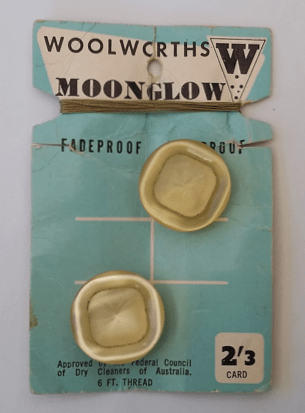
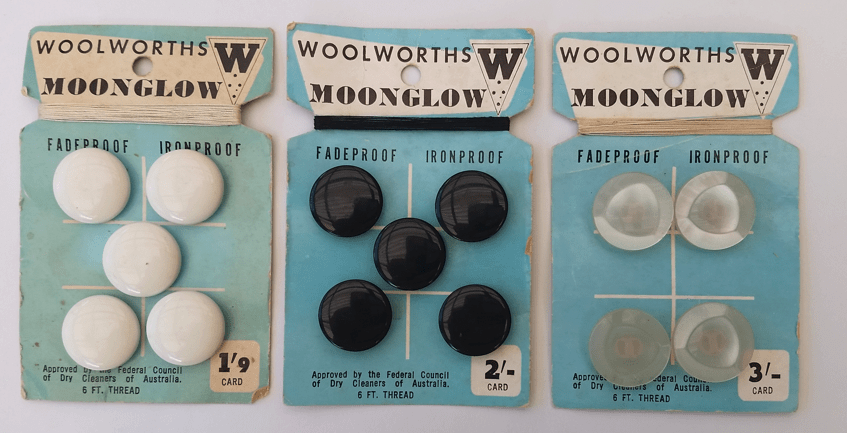
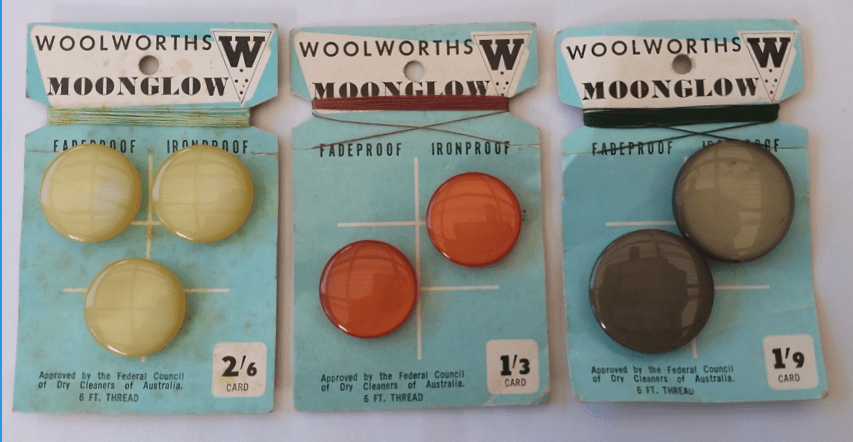
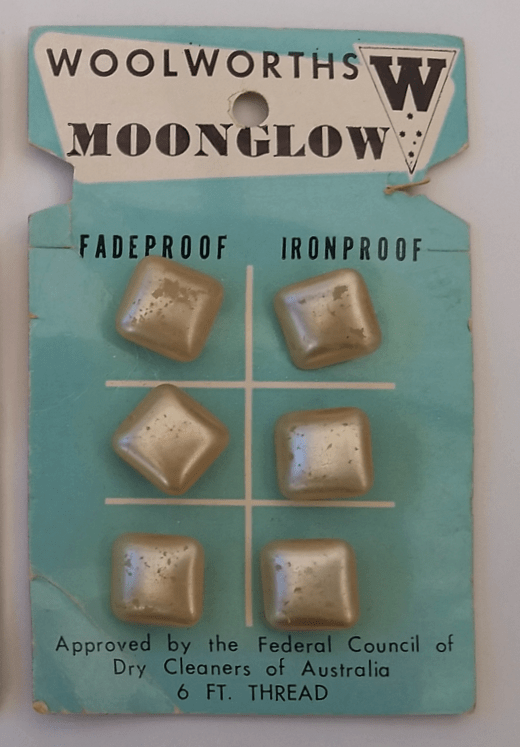
1966-67: dual pricing then decimal only.
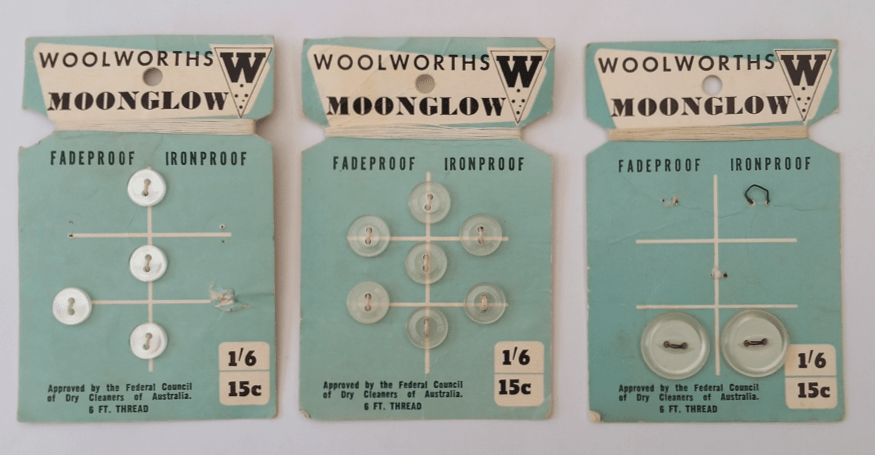
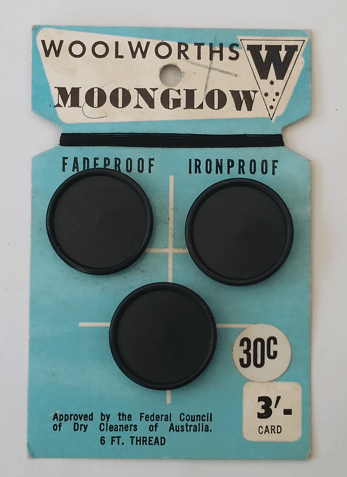
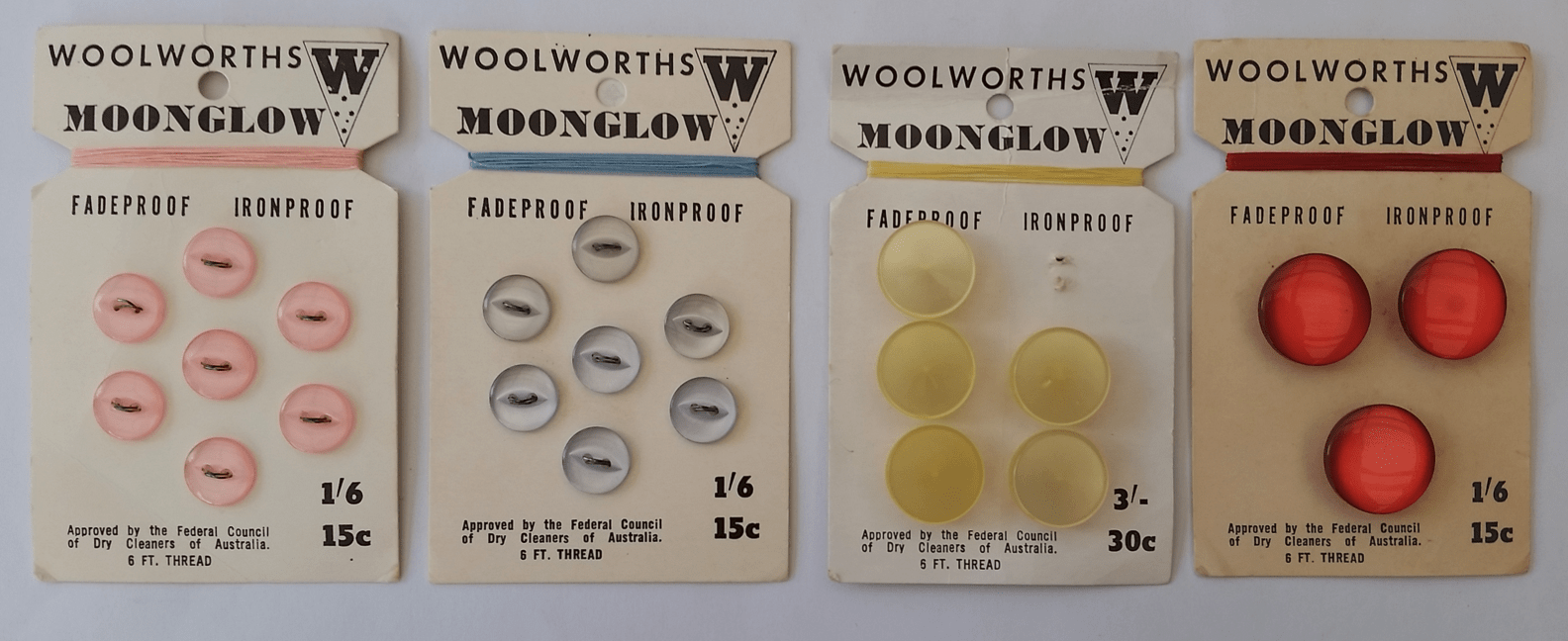
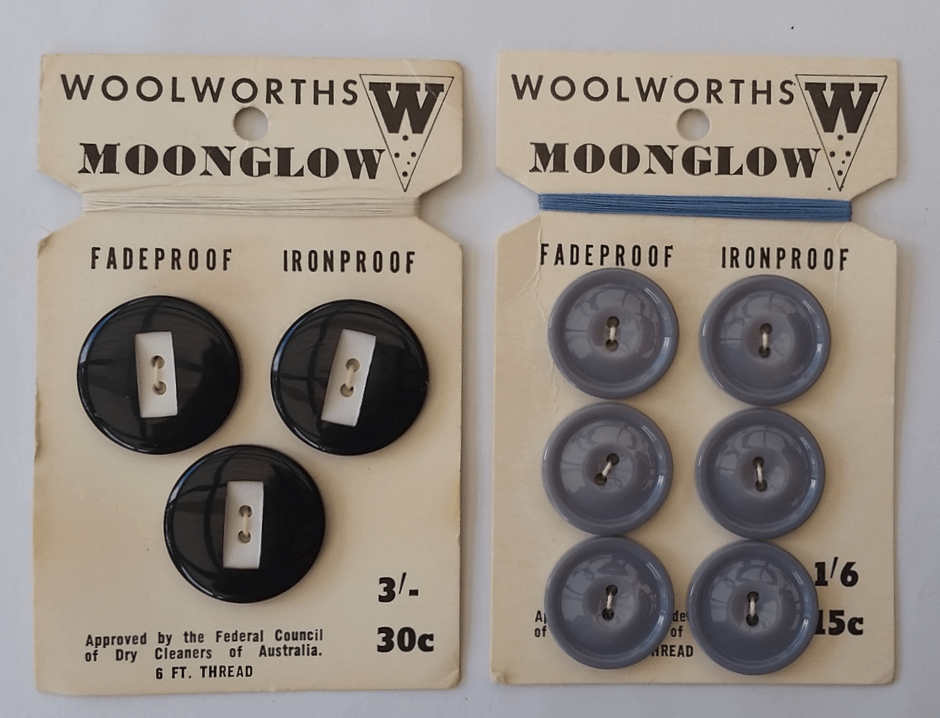
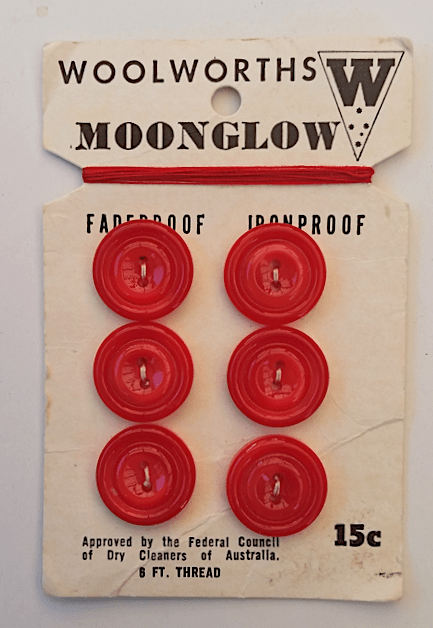
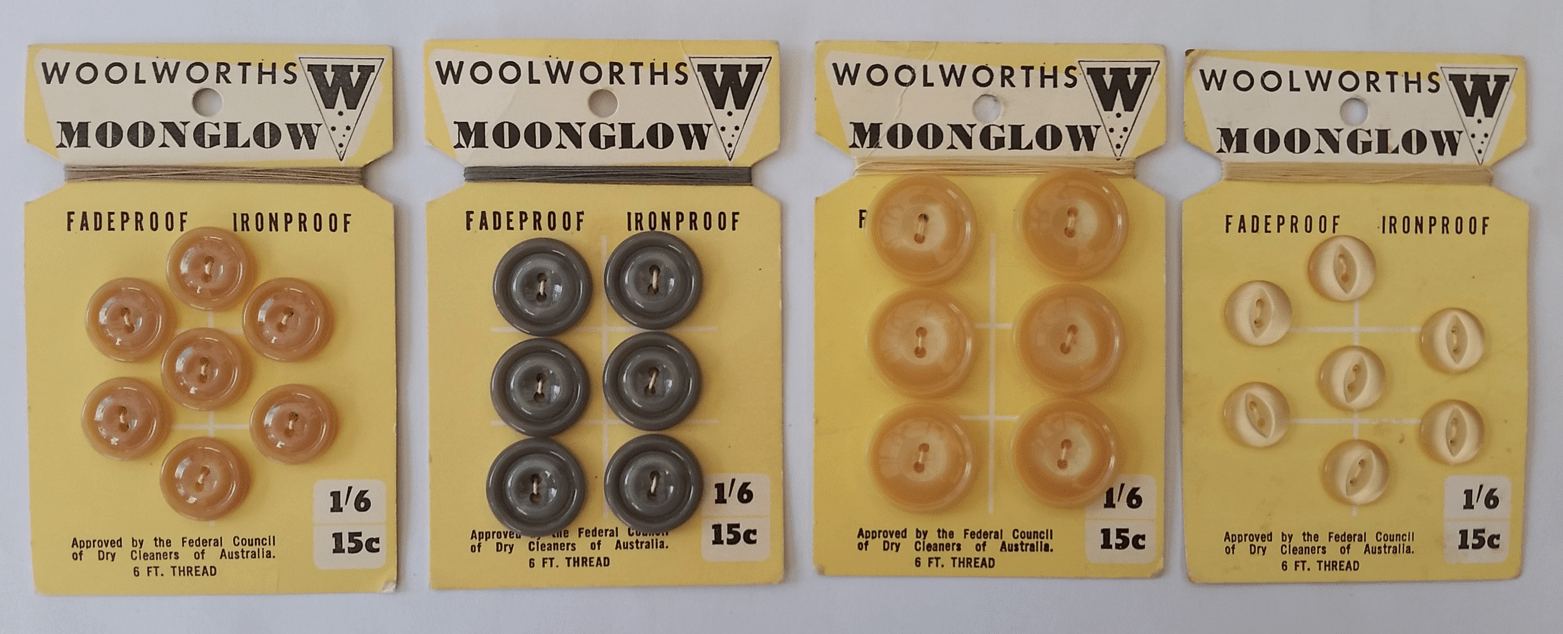
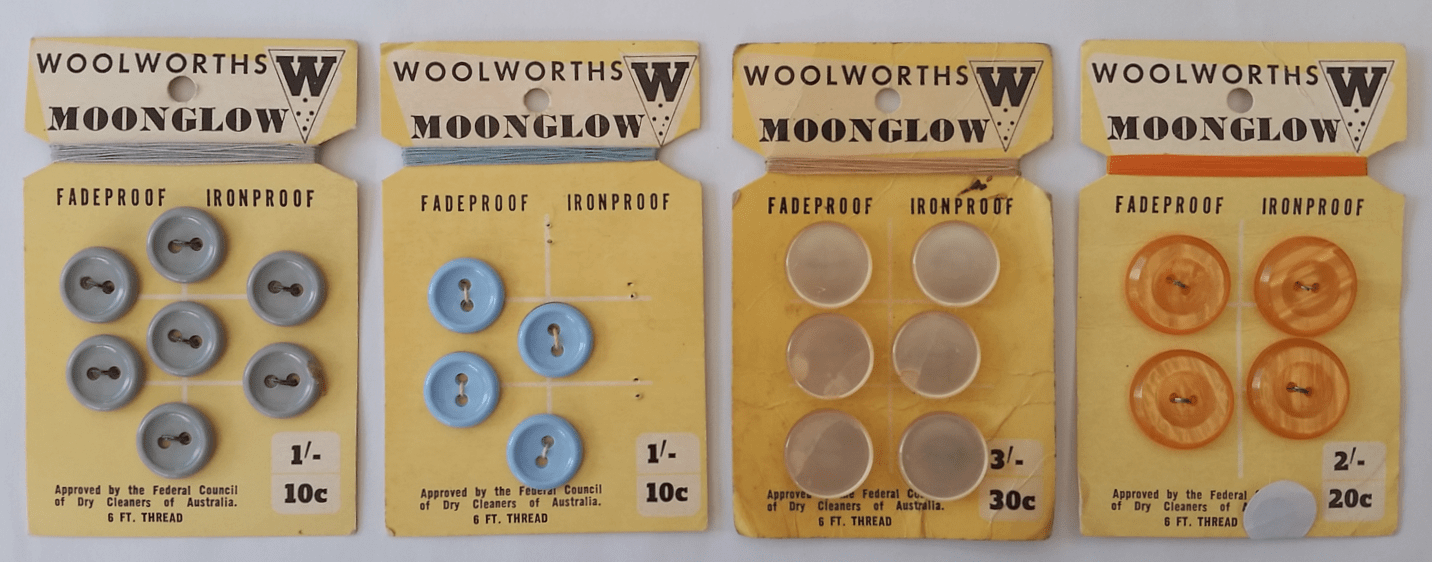
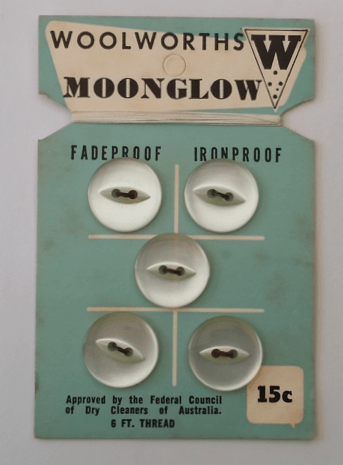
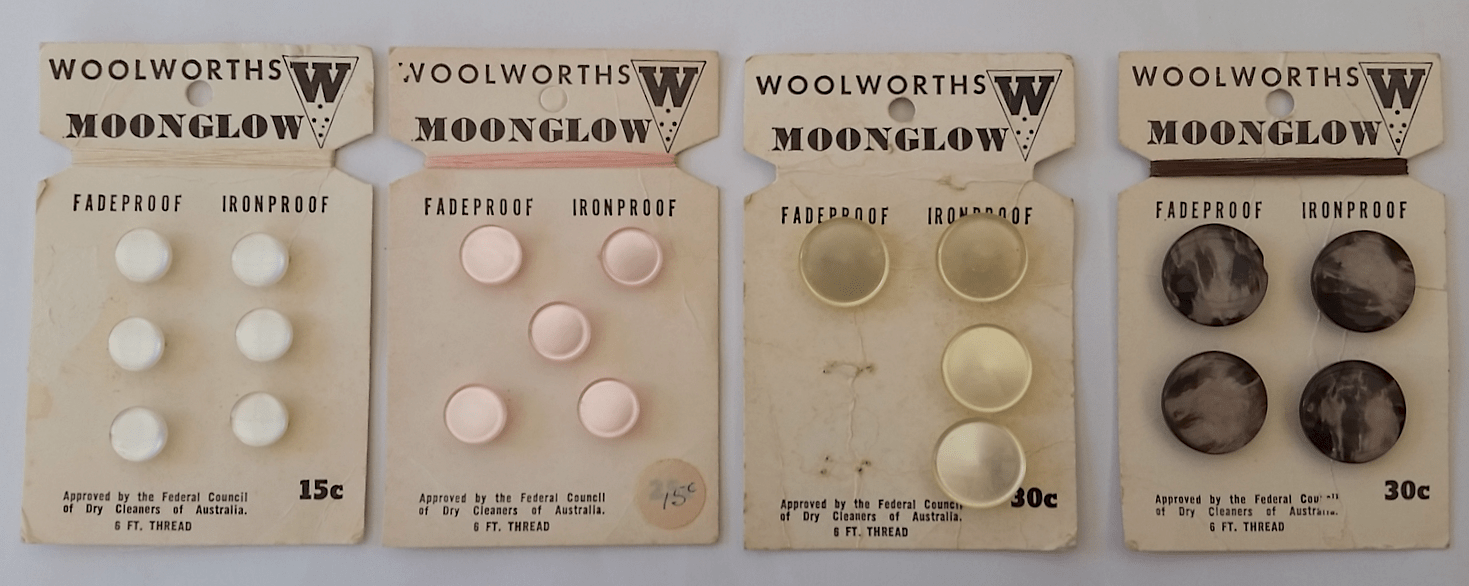
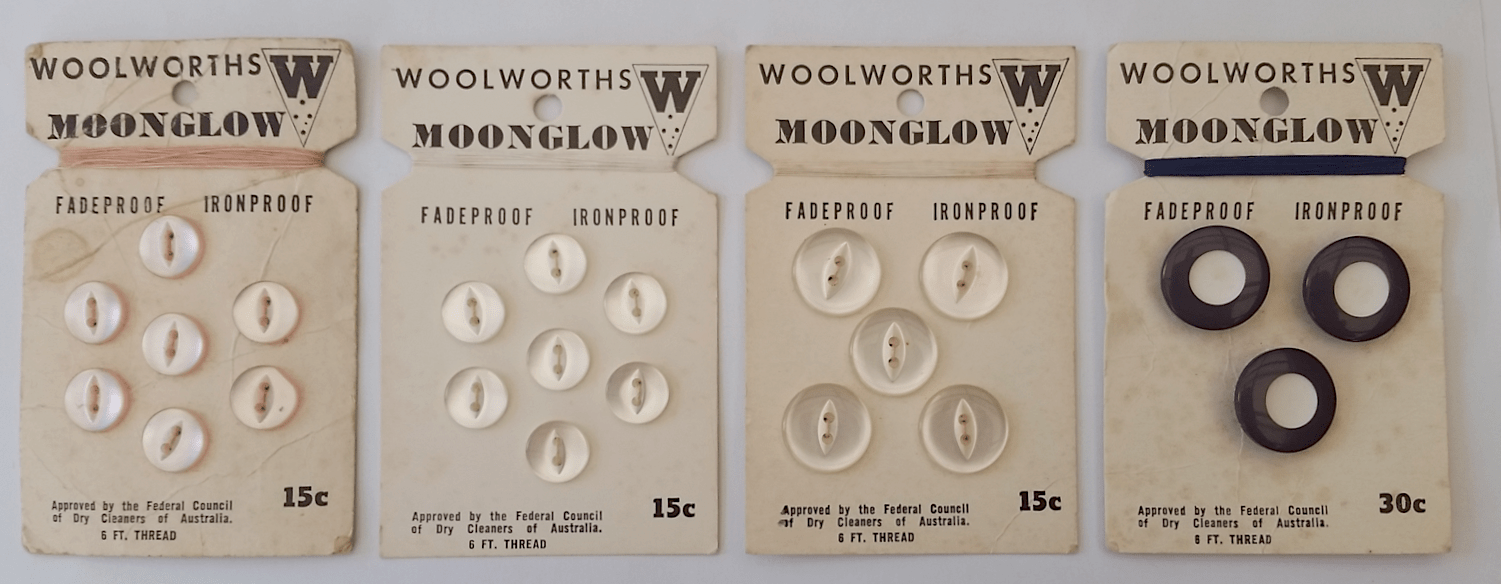
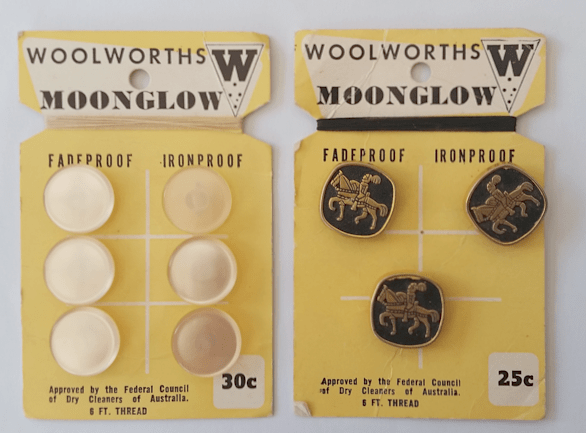

Sew ‘n’ Save: 1968-1972
The Woolworths Moonglow line was replaced by ‘Sew ‘n’ Save around 1968. Some cards are marked “by Beutron”.
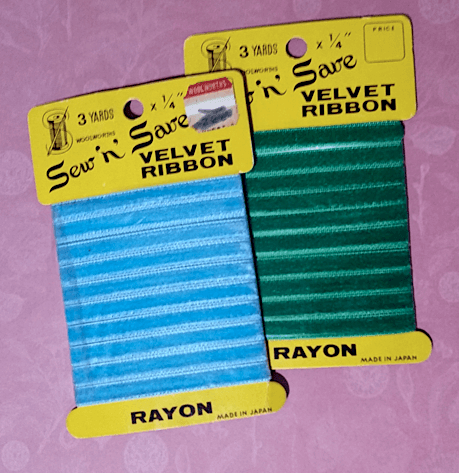

The advertisement for the large card of utility buttons is below.
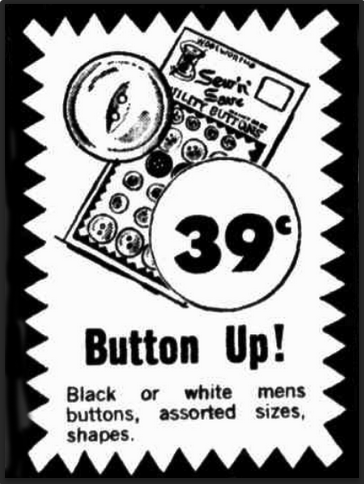
The Canberra Times, 16th April 1969 page 20.
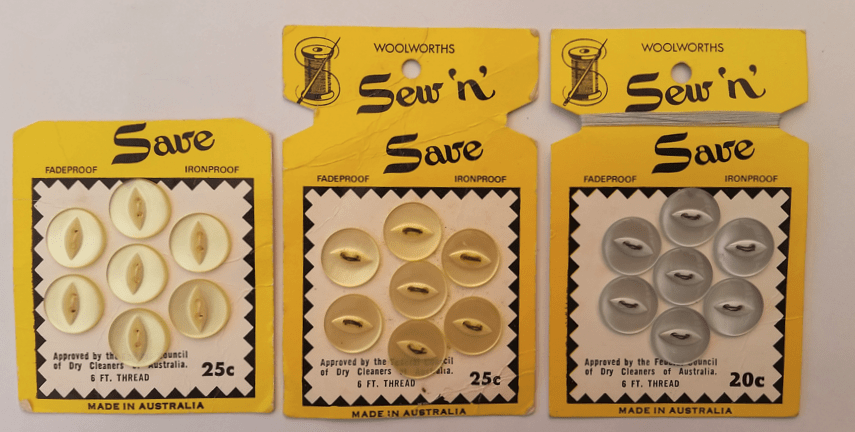
Some are stapled, some sewn.
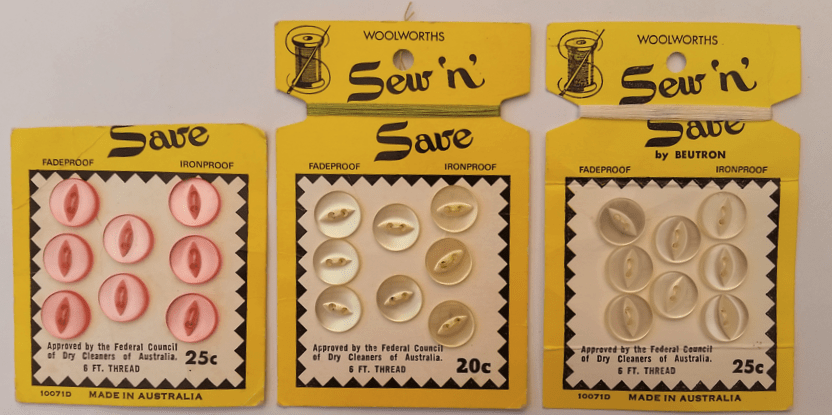

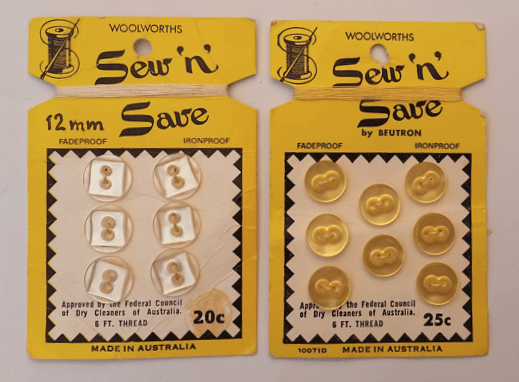
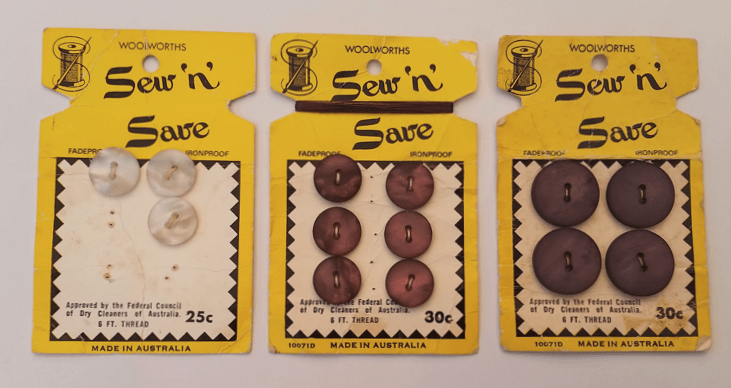
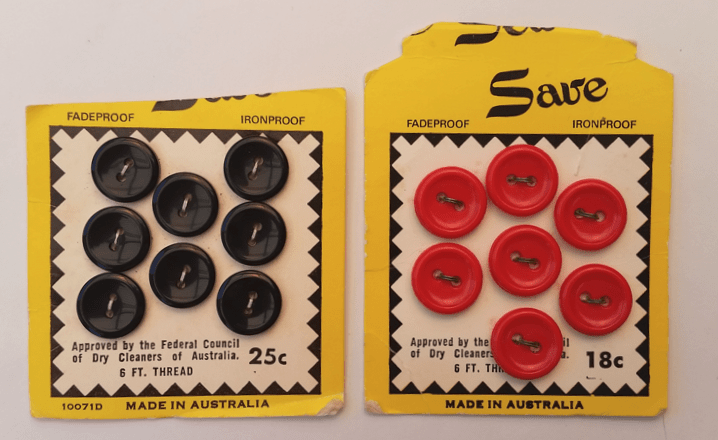
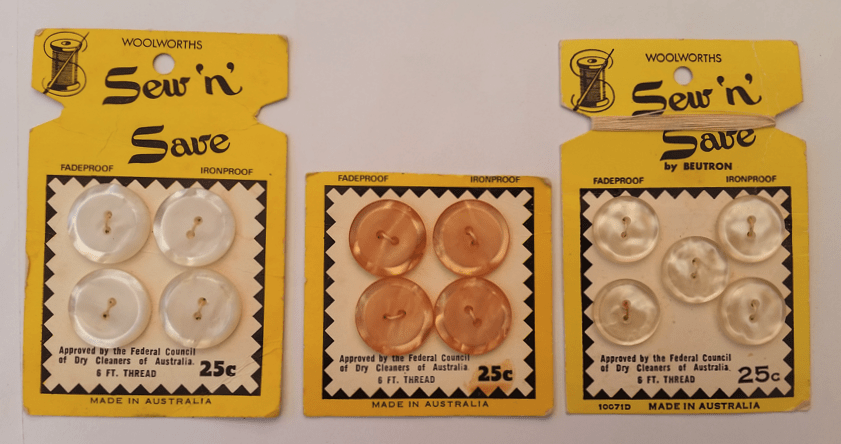
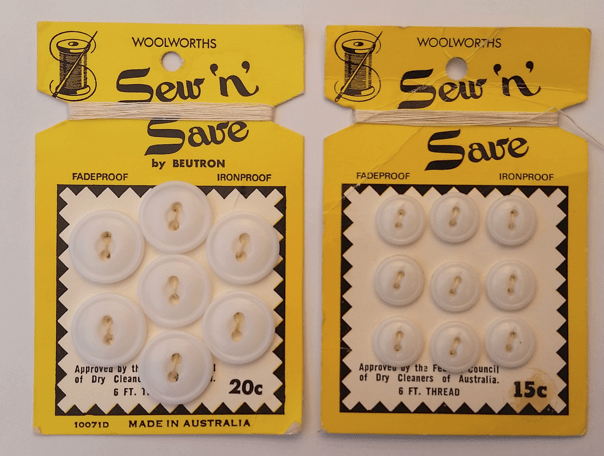
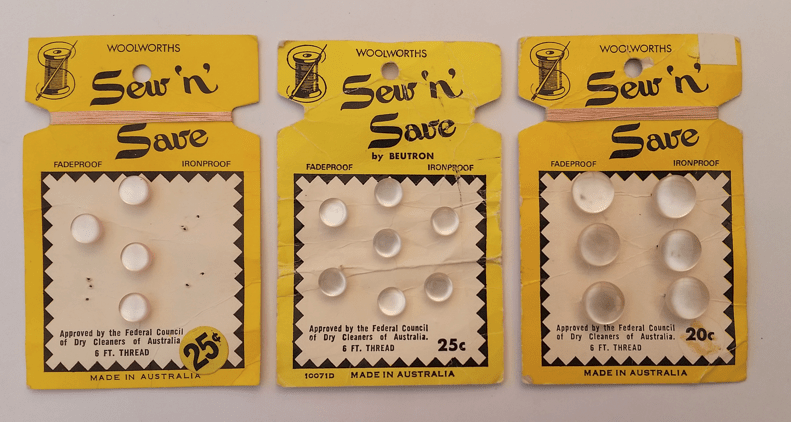
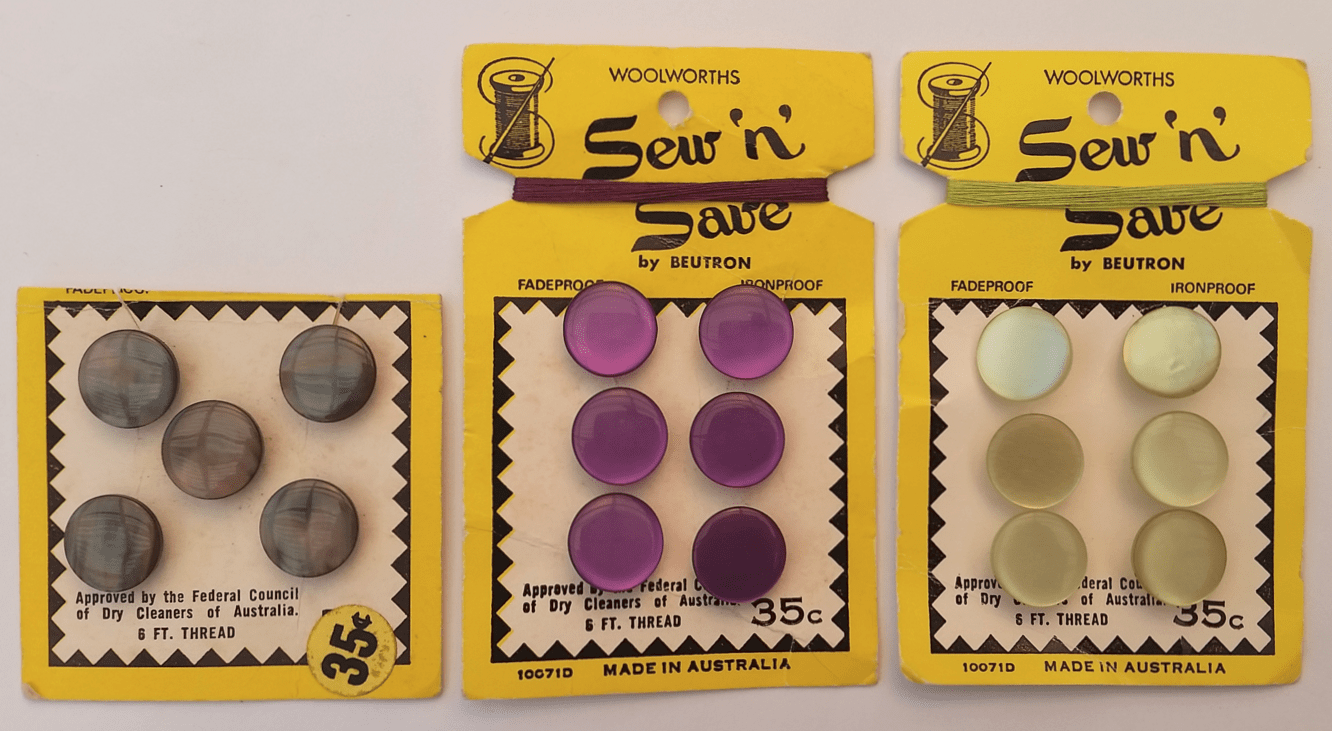
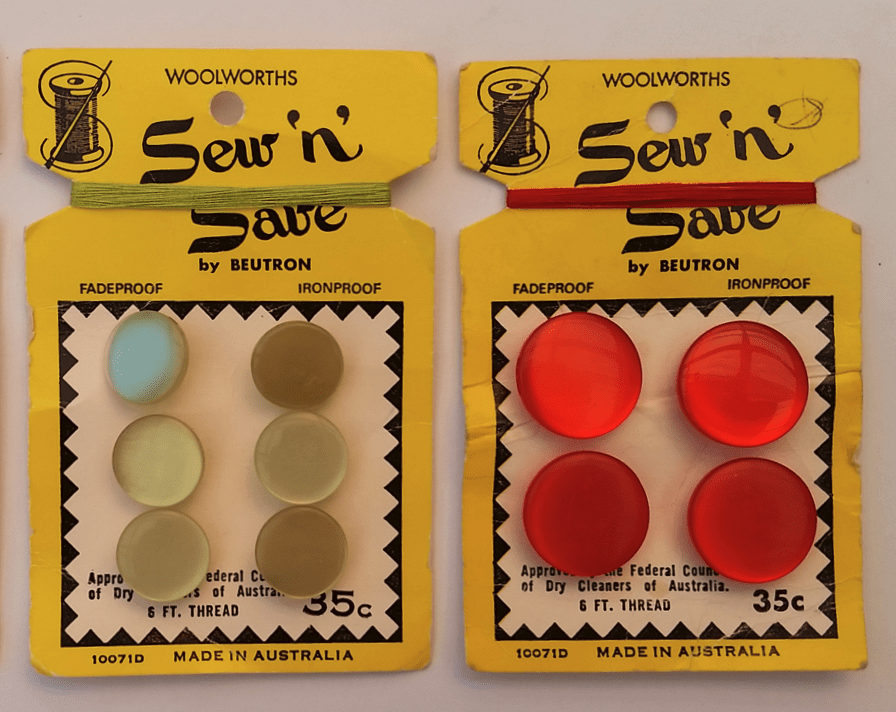
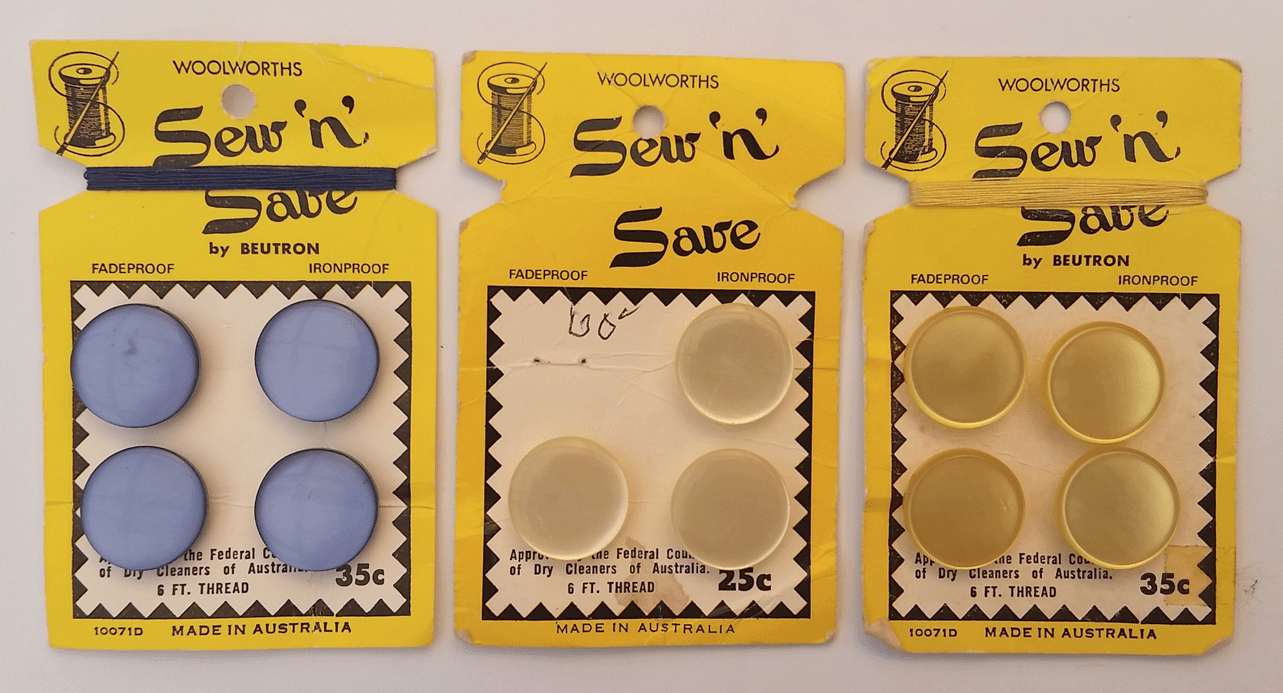
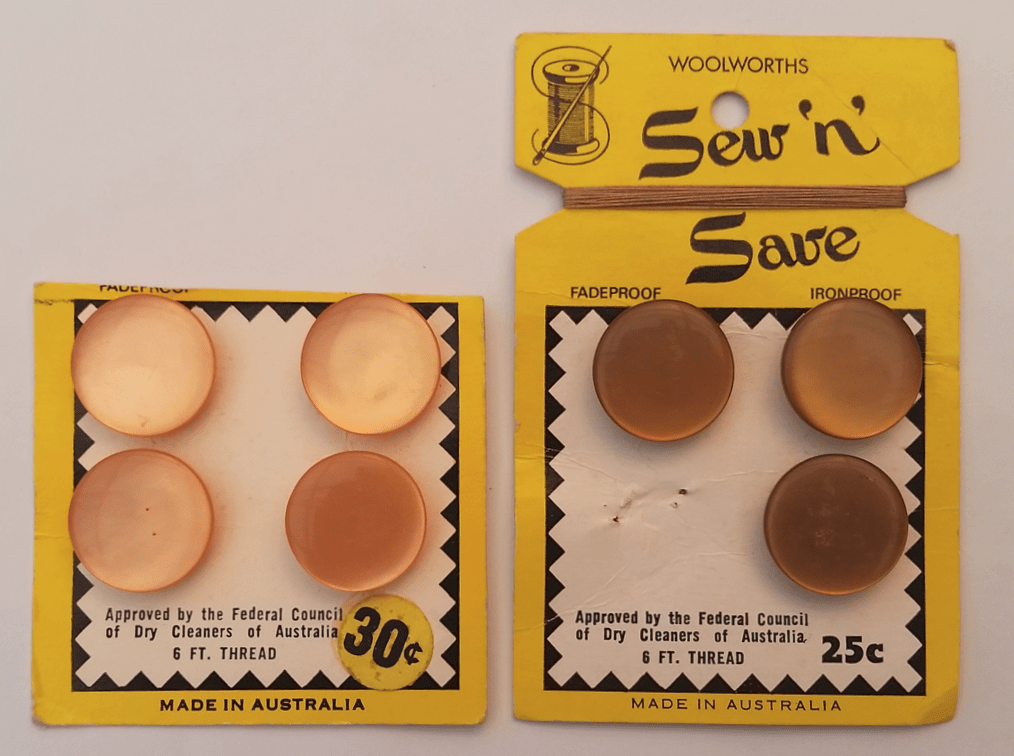
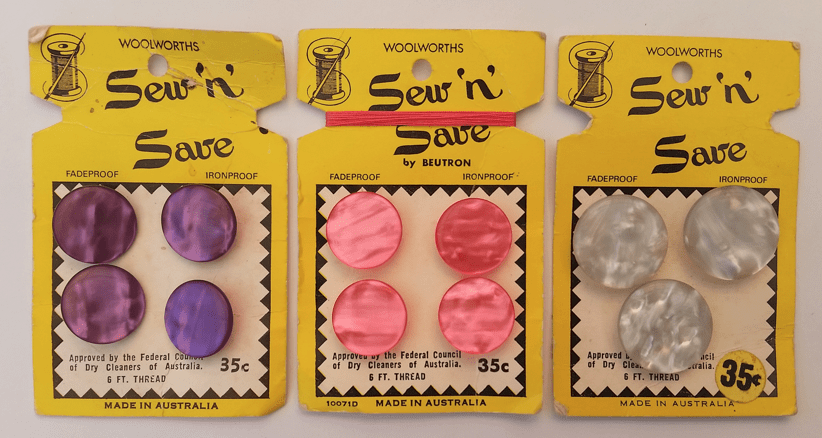
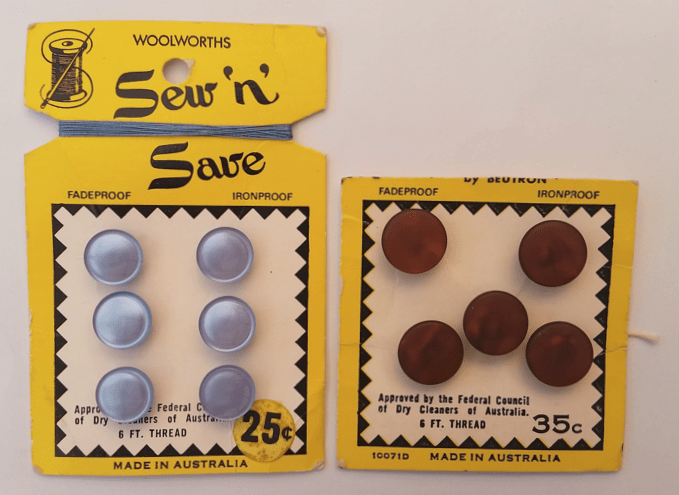
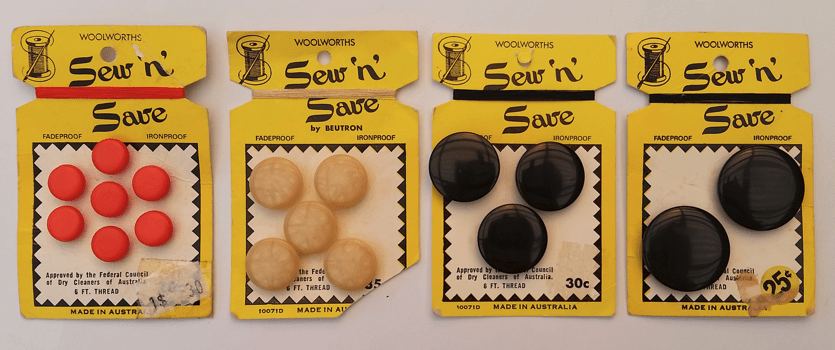
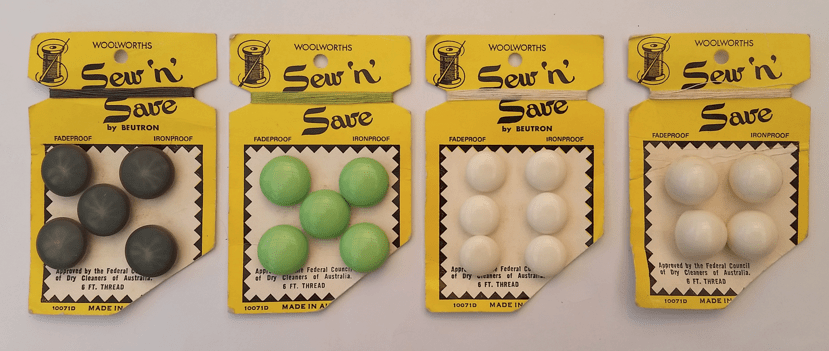
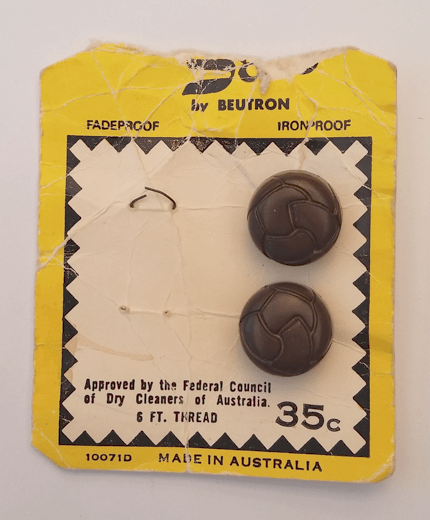
Faux leather
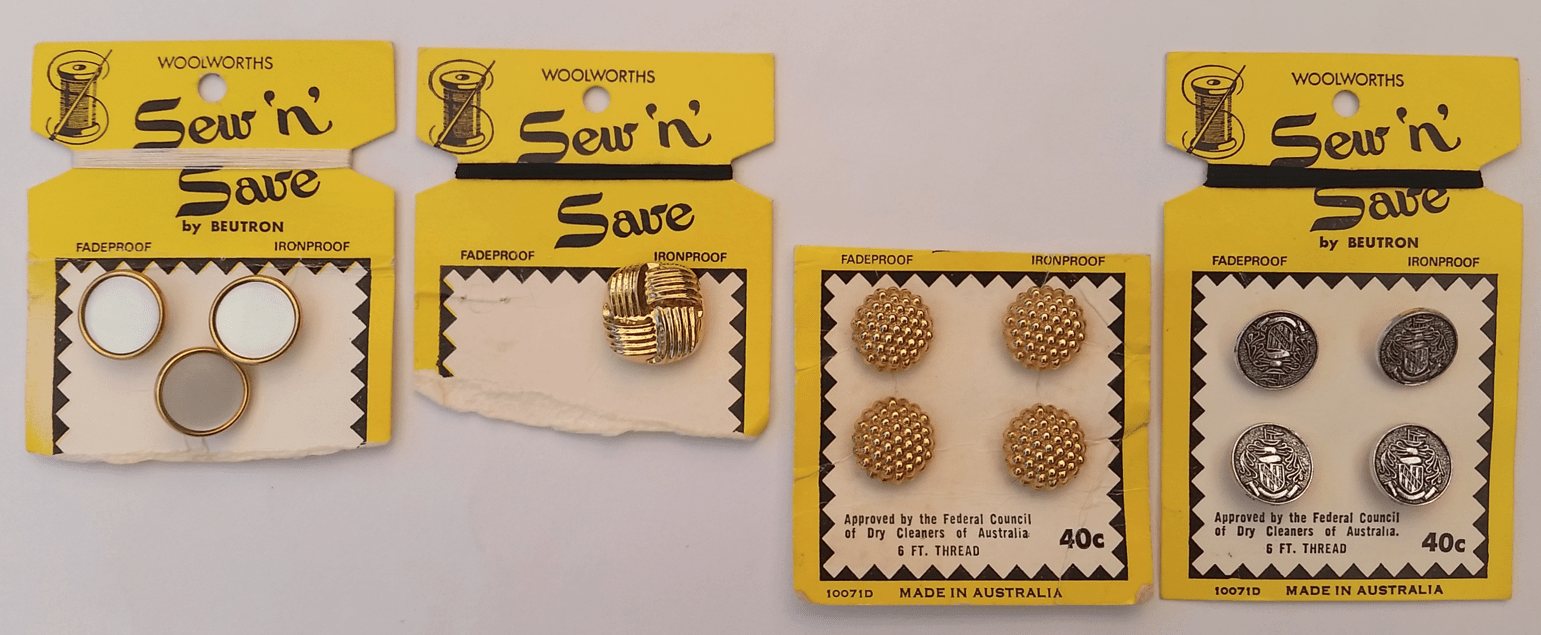
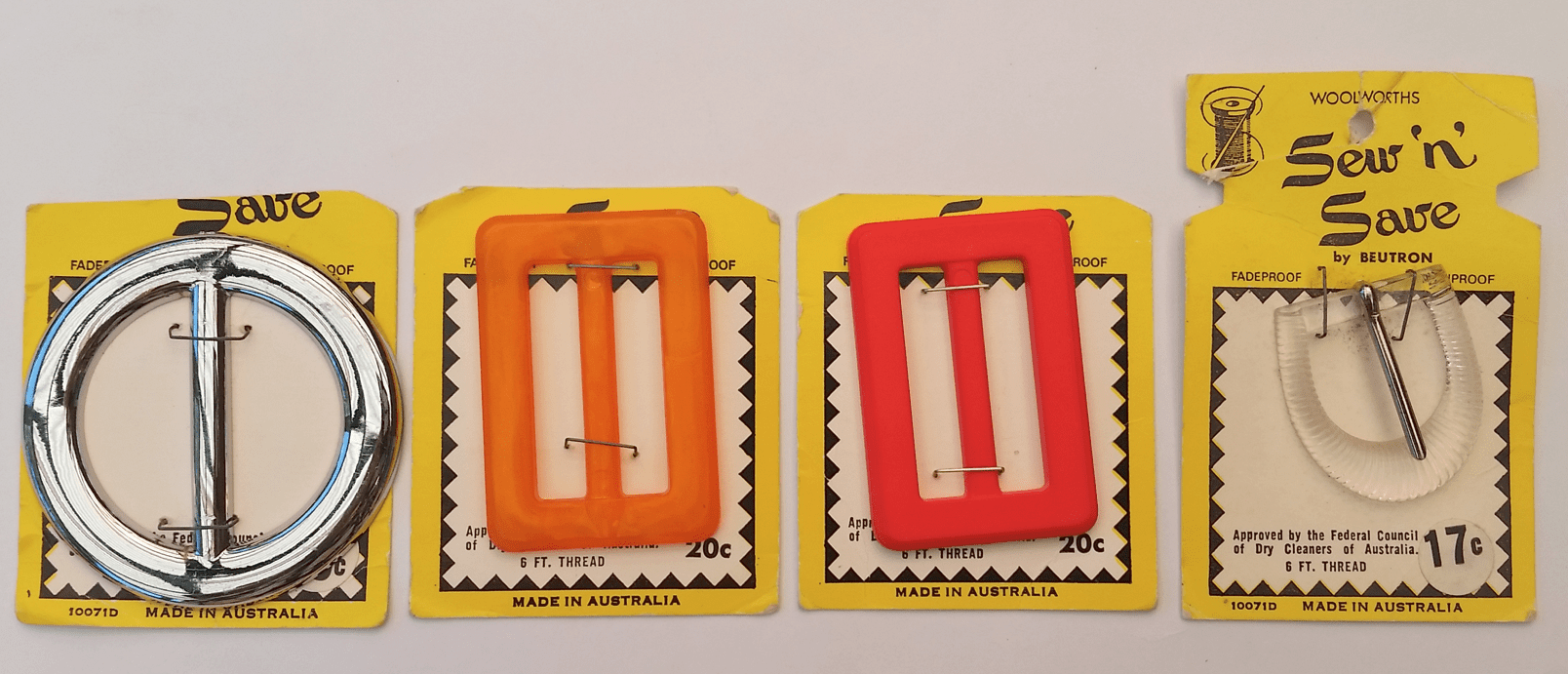
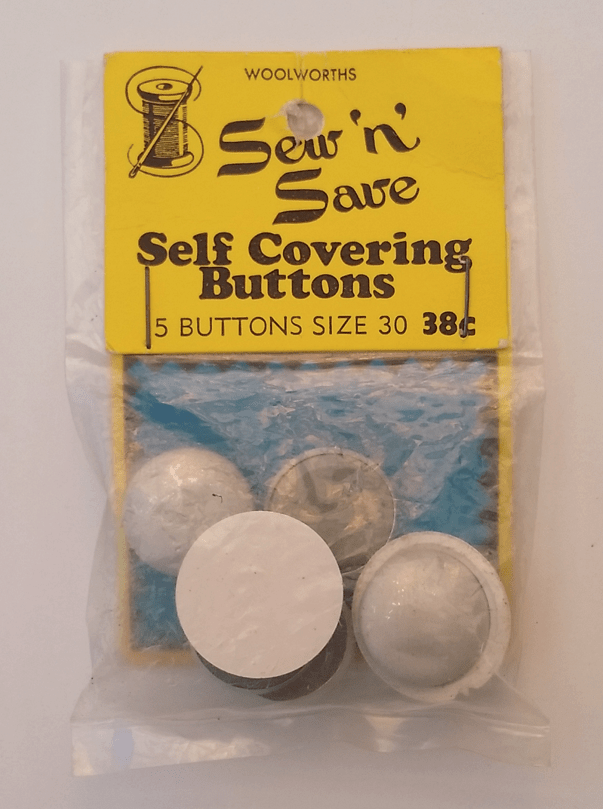
Big W: 1973 onwards
Despite the passing decades, most button styles were the same as those from the 1950s , sometimes even earlier. Basic buttons, sew through and shanked, with new materials mimicking old, stood the test of time, even through the quality seemed to have gone down, with cheaper plastics taking the place of casein. However, there were a few new styles in the 1970s.

This Woolworths logo came into use around 1973.
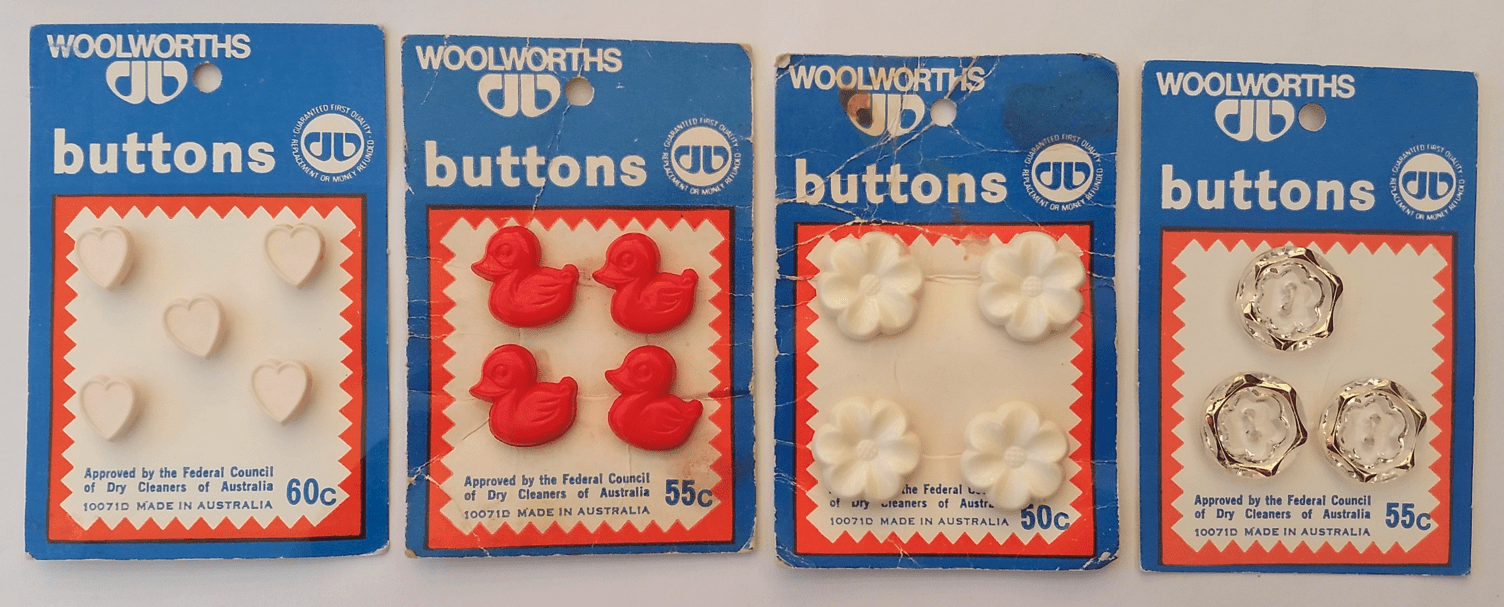
All these styles were seen in the 1950s.
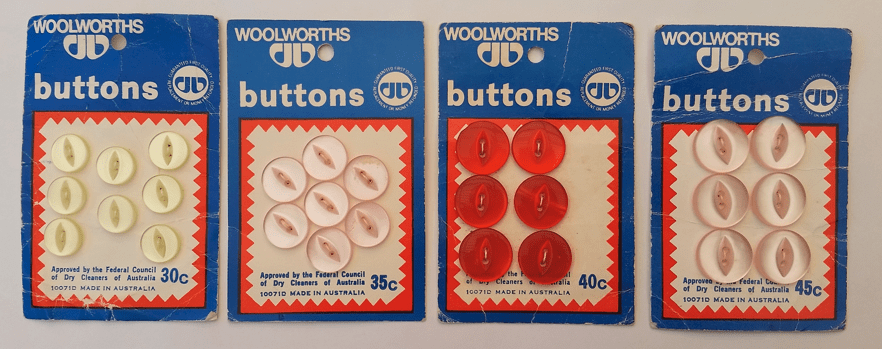
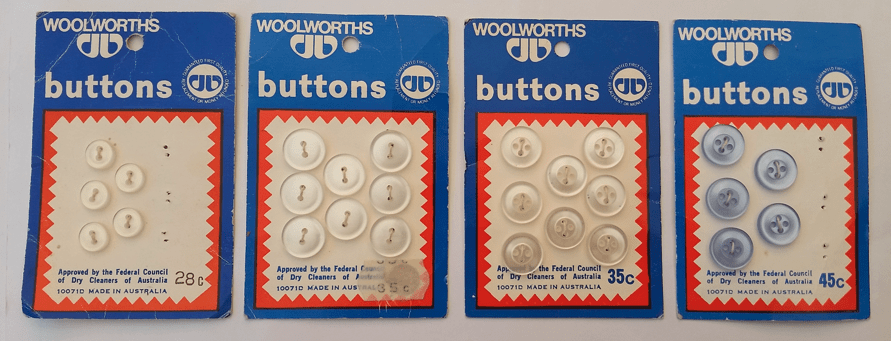
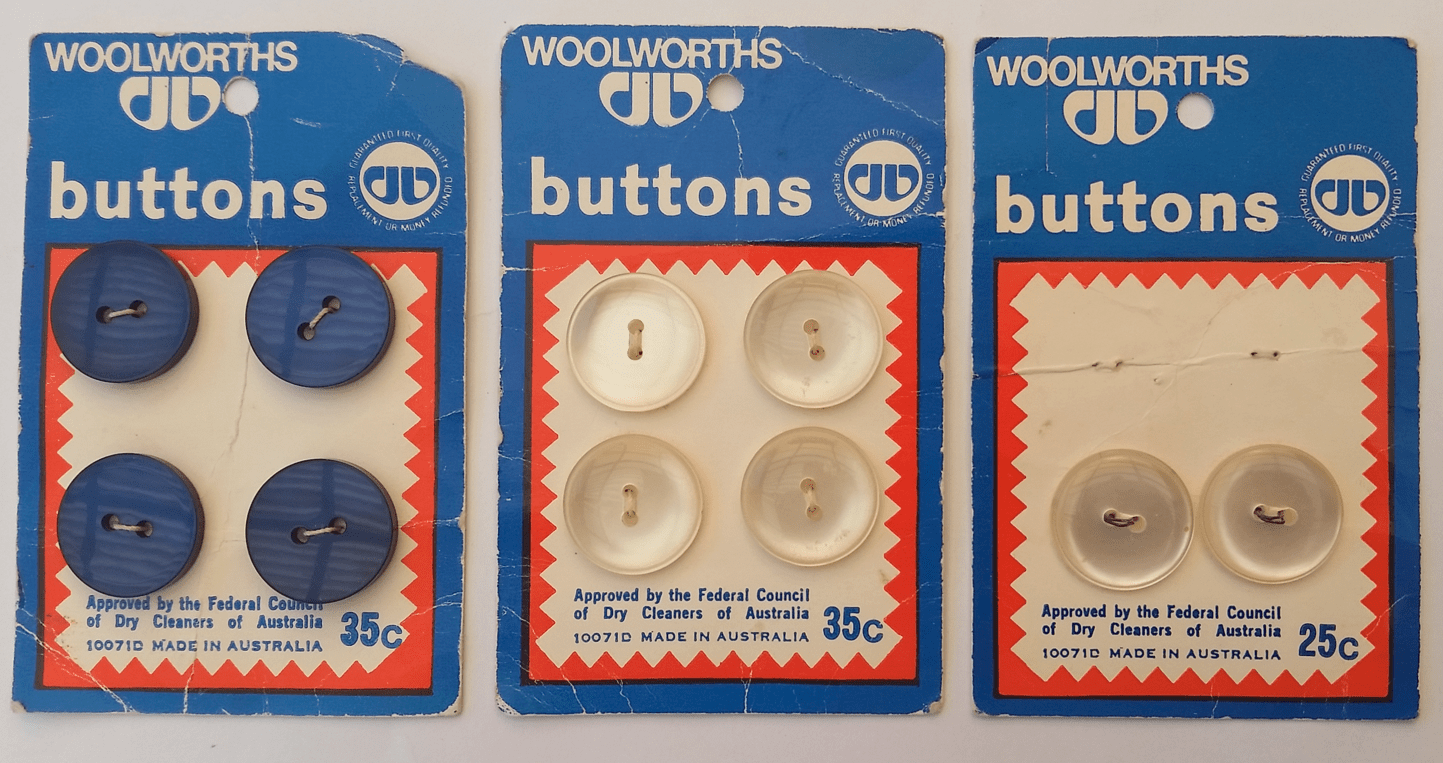
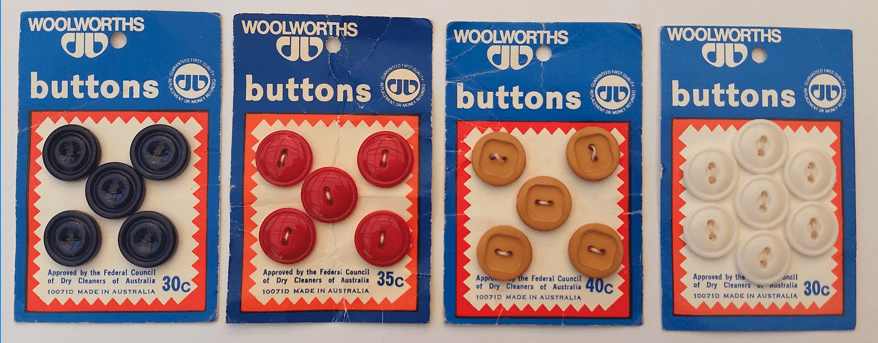
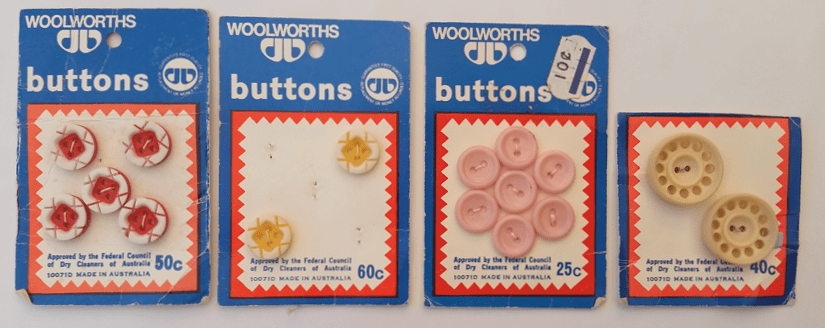

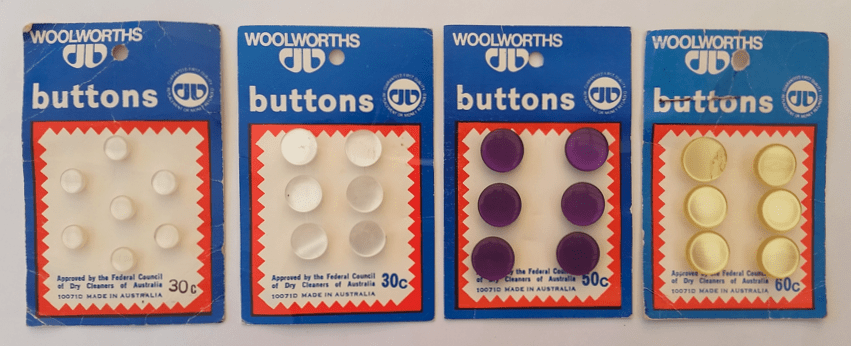
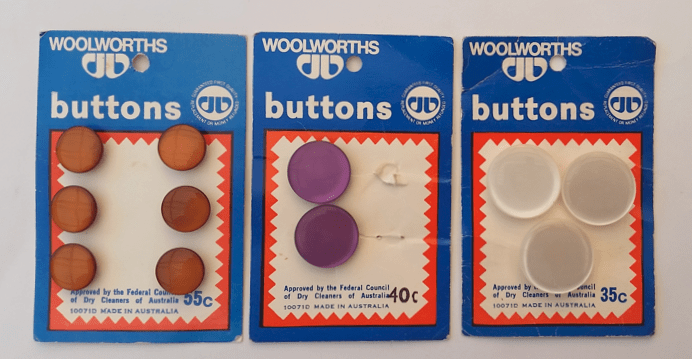


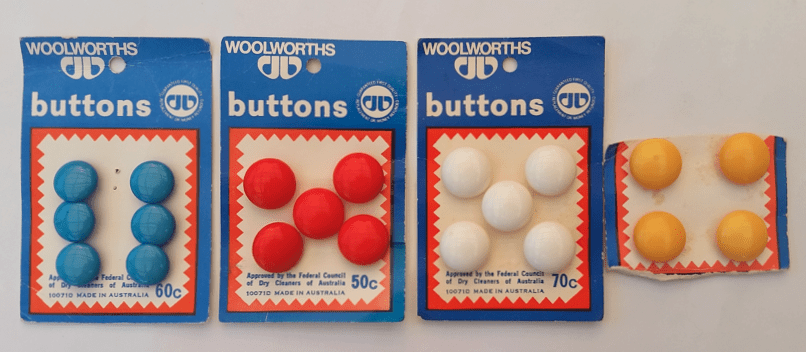
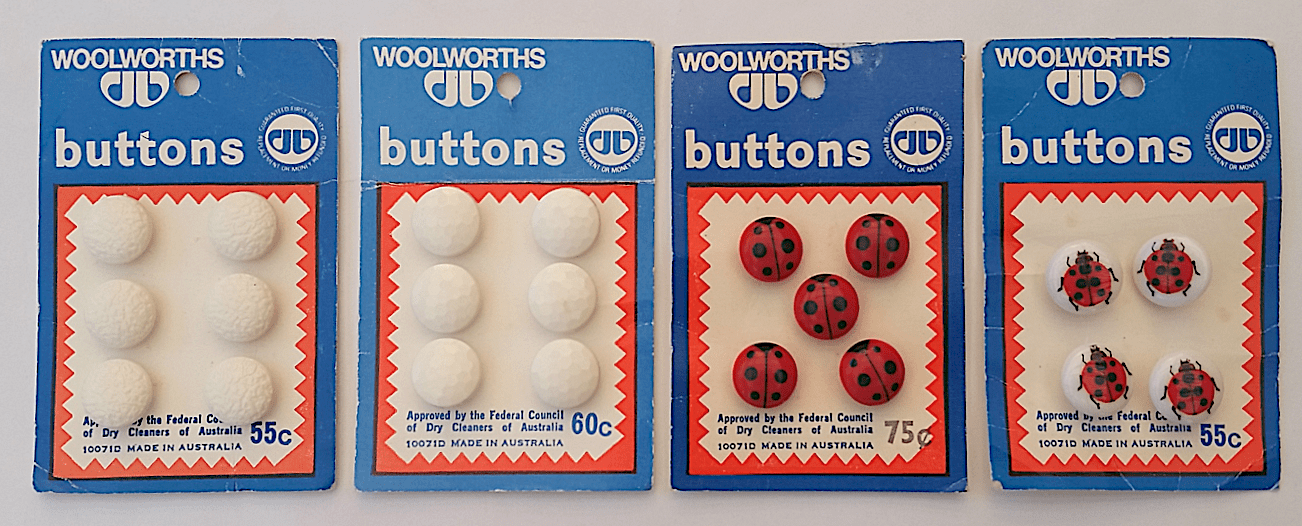
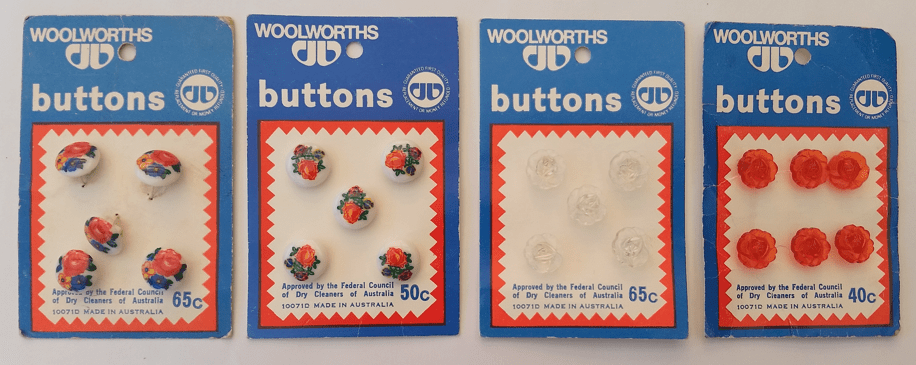
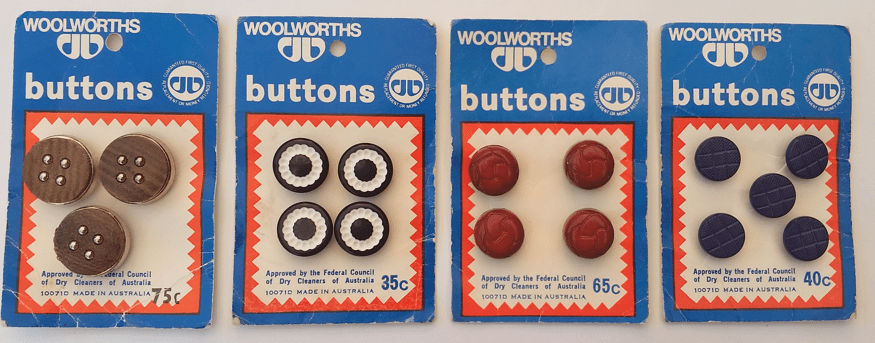

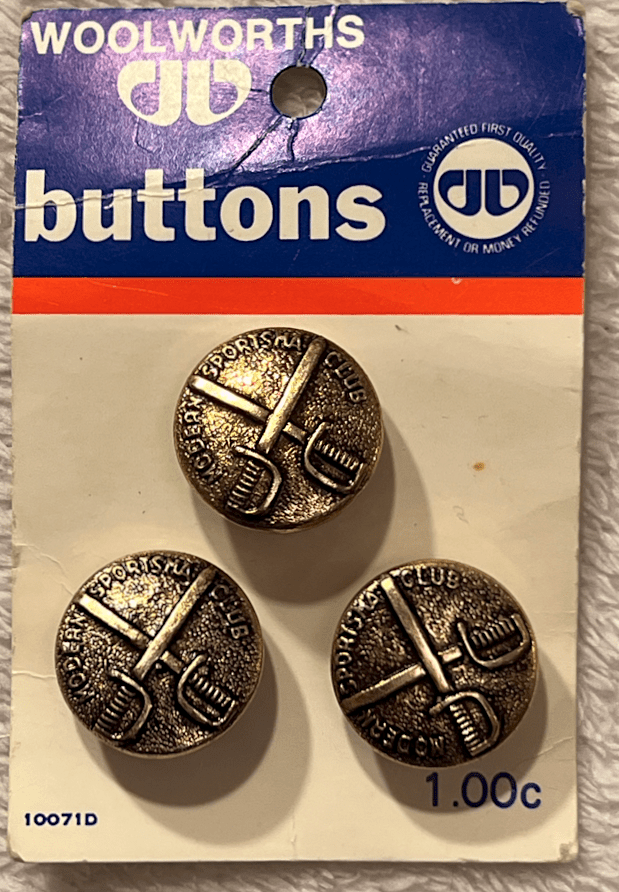
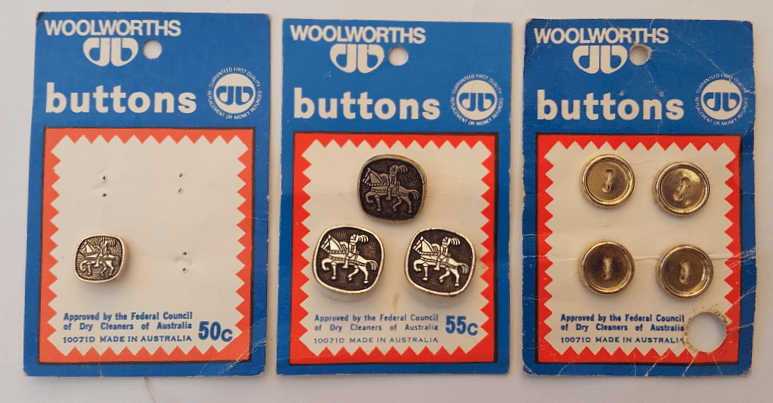

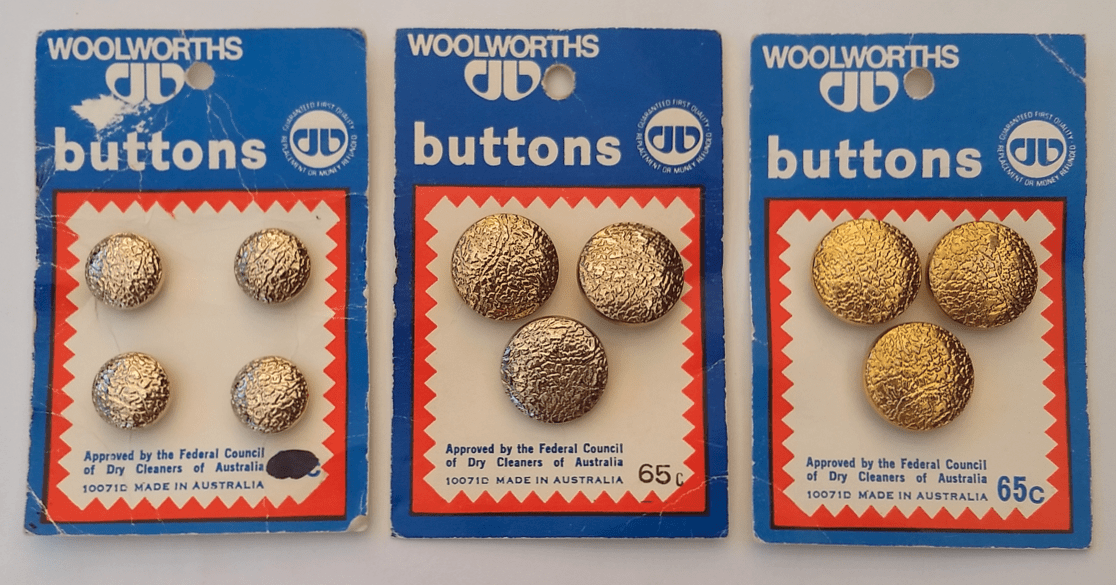
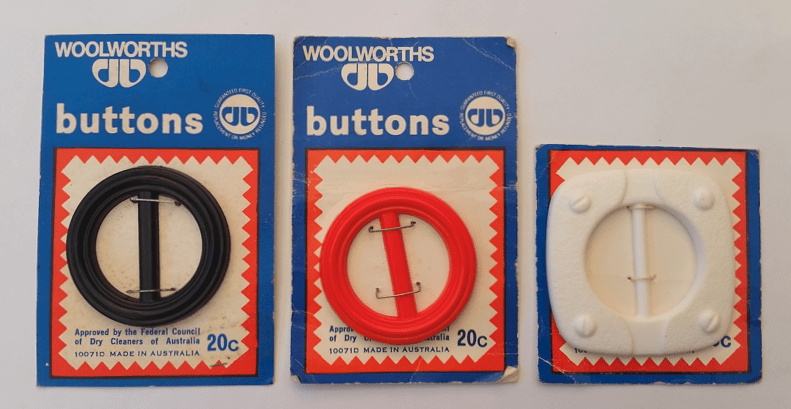
Around the late 1970s, or perhaps early 1980s, the cards were changed again; the colours were retained, but the bottom 2/3 of the card left white.
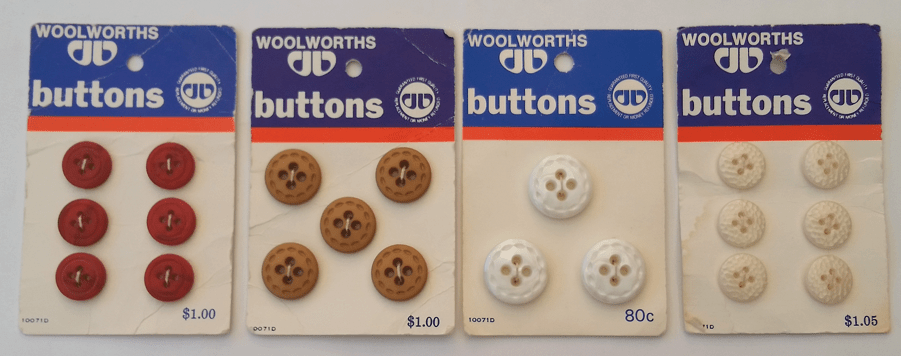
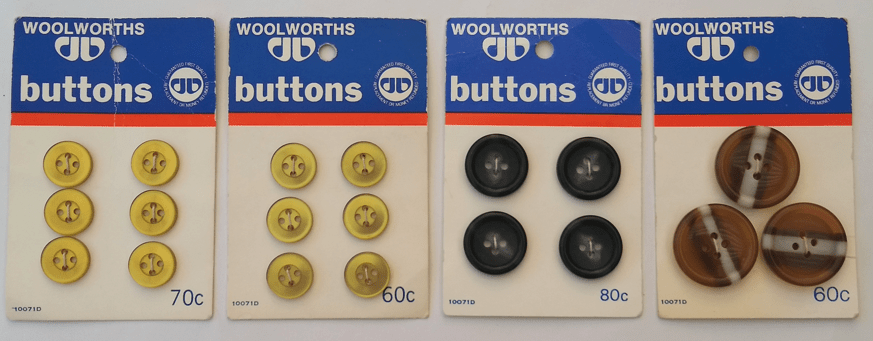
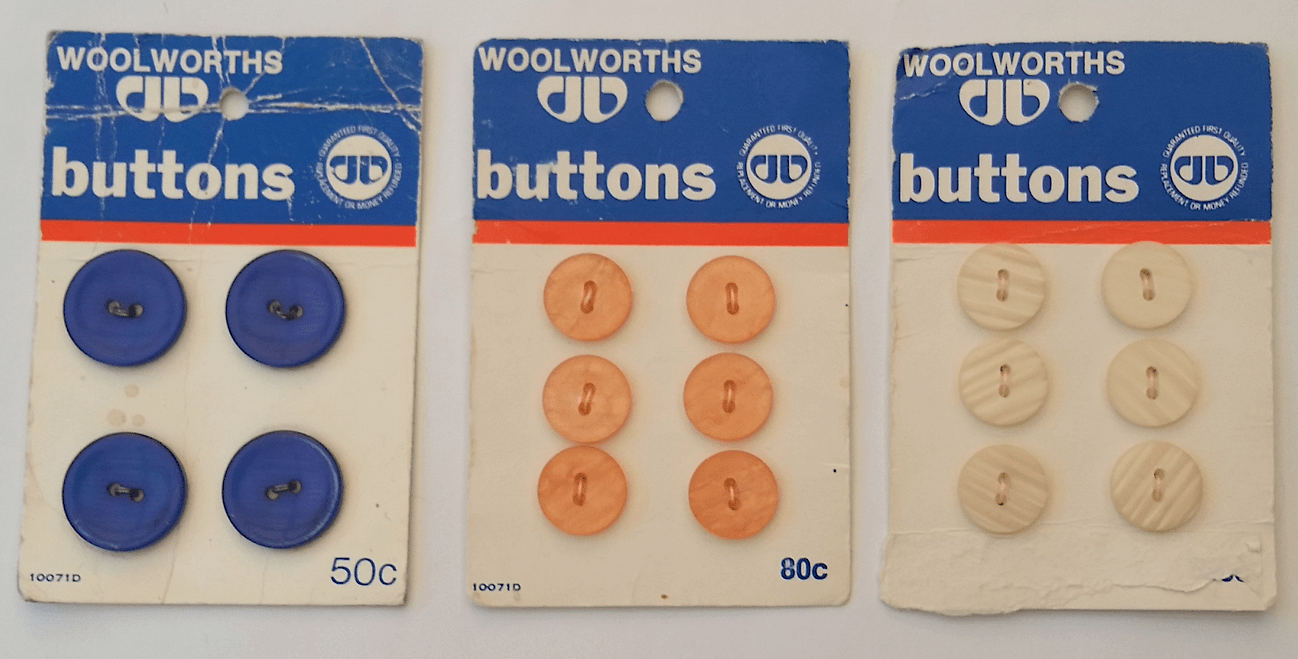

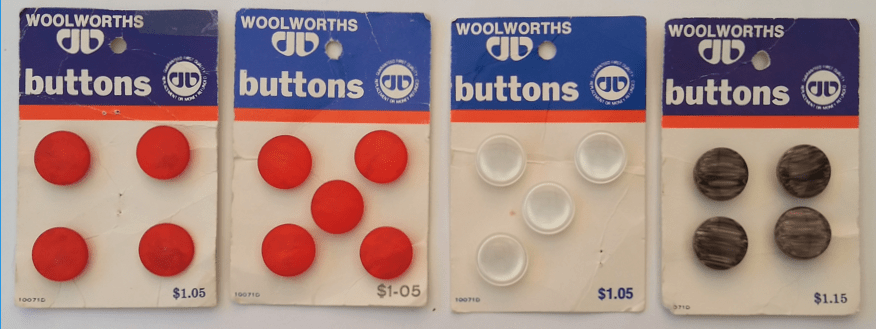
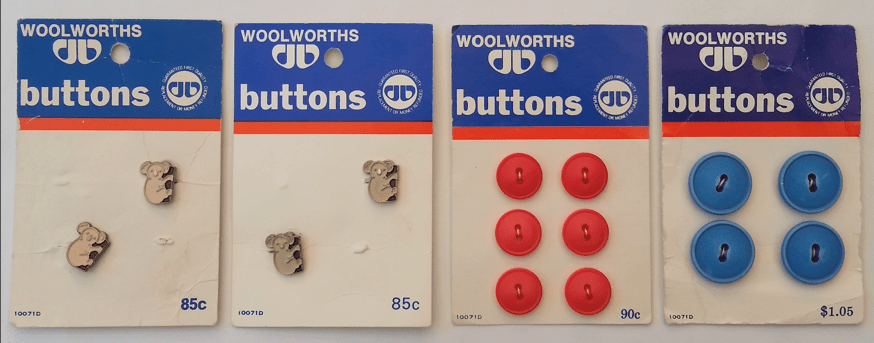
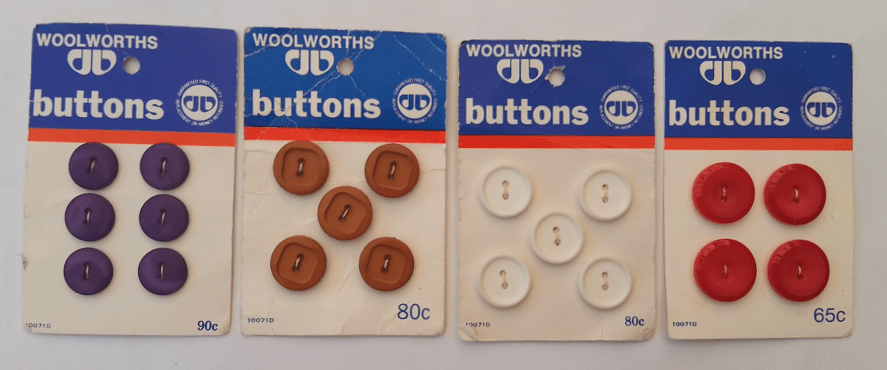
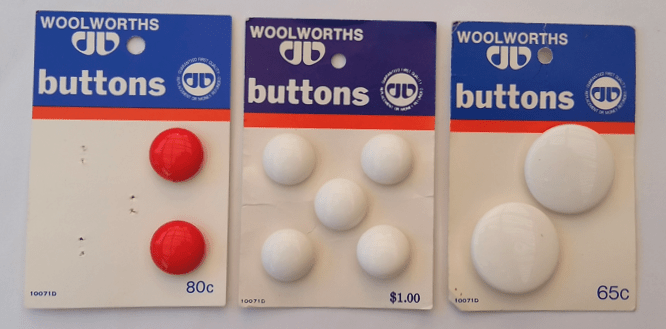
Grandway: 1969-1980s
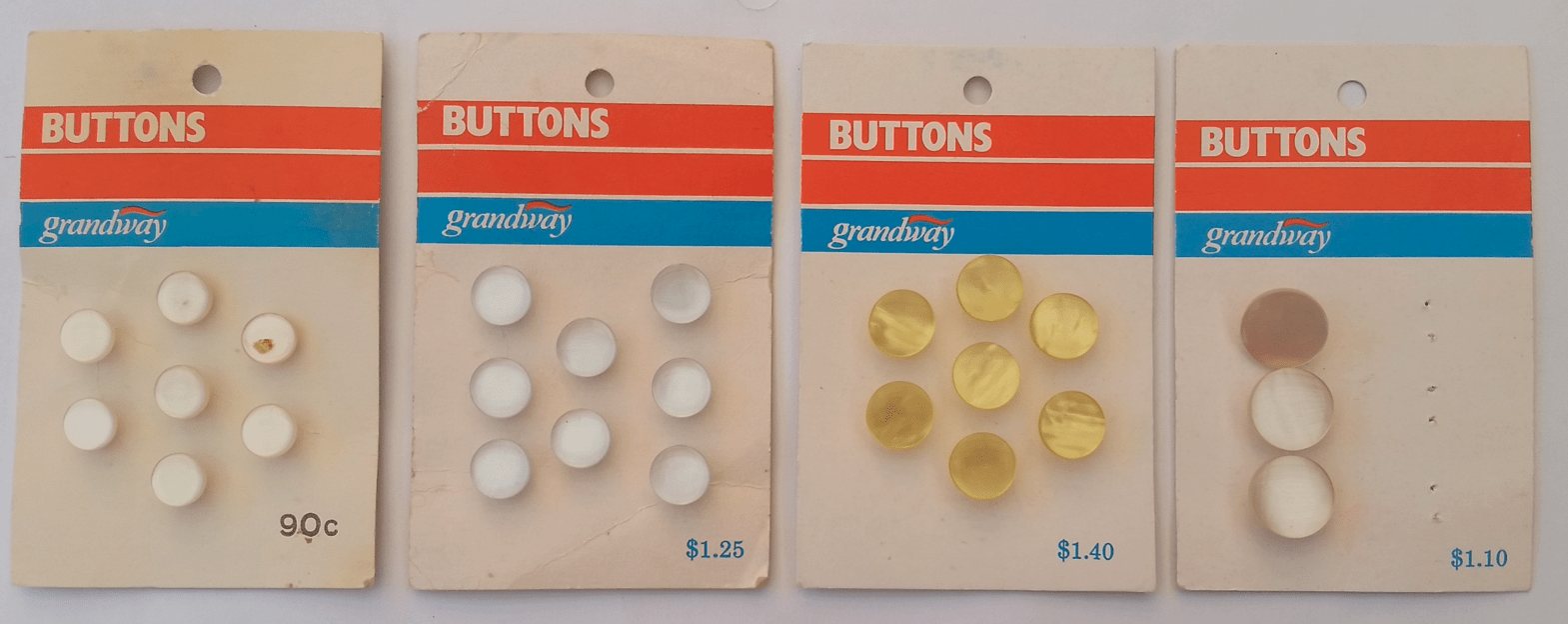
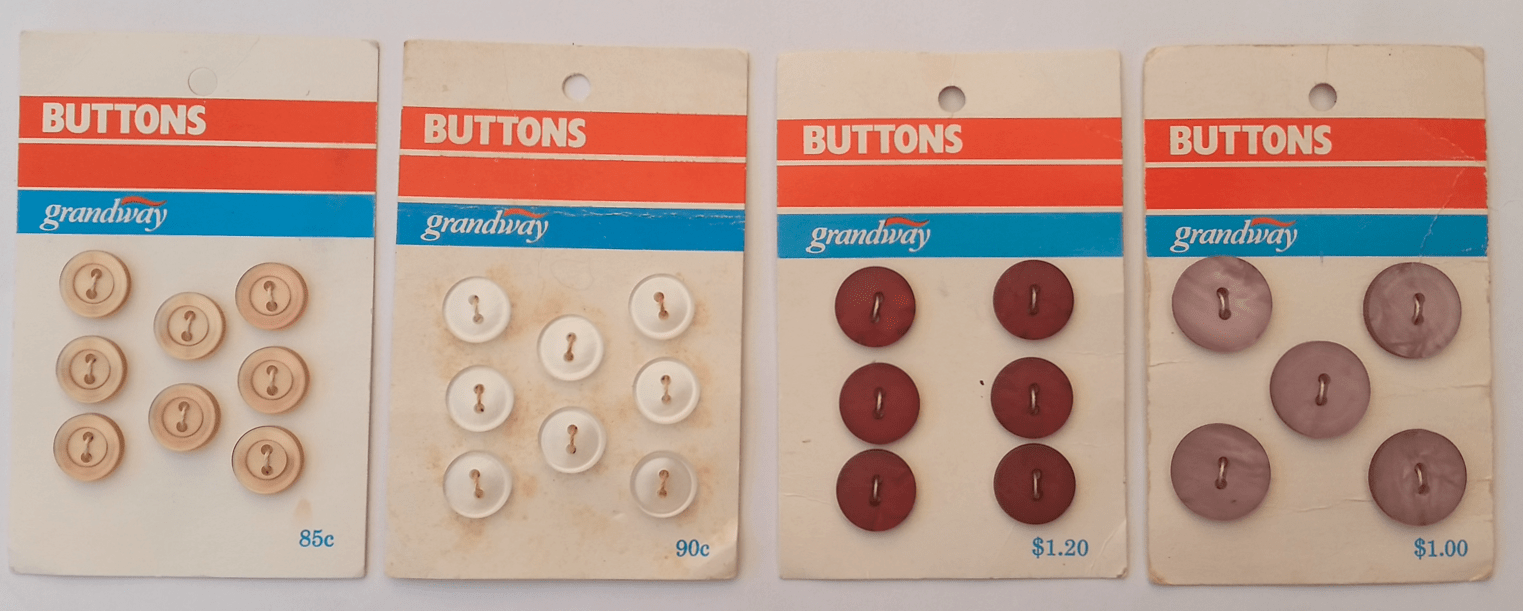

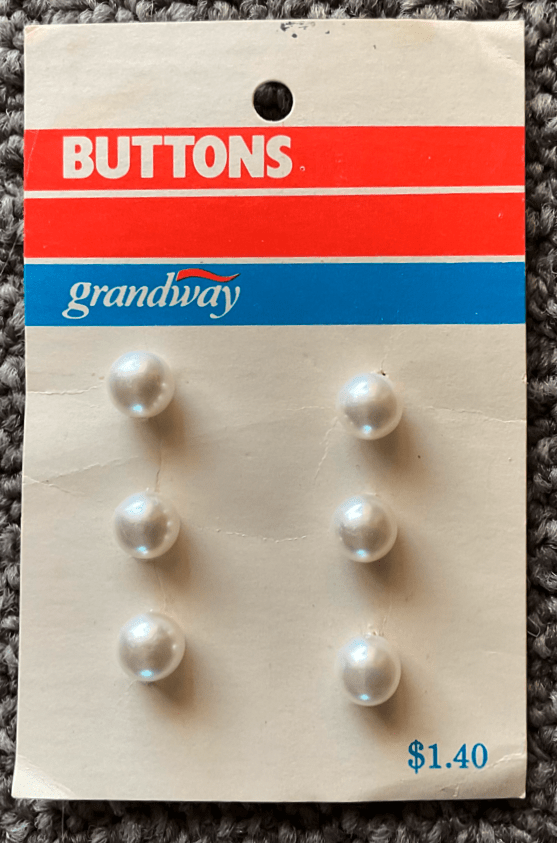
Grandway Sample cards
On the back of one of these sample cards it is noted “Woolworths & Big W”, “Grandway”, and “122 hooks”, “144 Hooks”, indicating there were two sizes of display racks. Many of these designs date back to the 1950s.
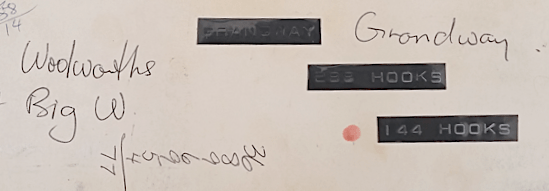
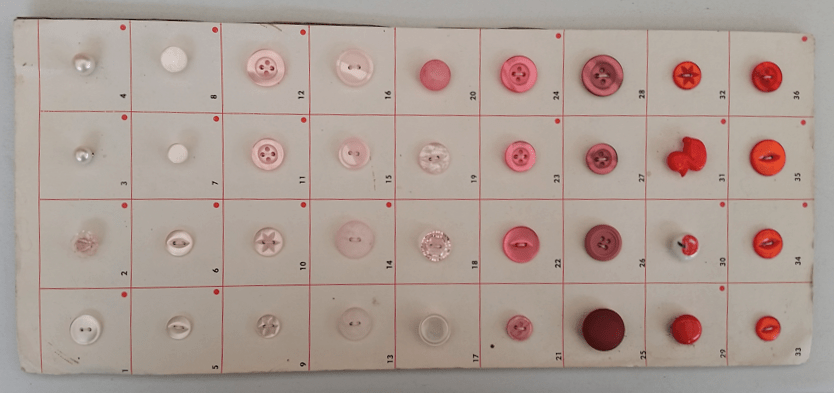
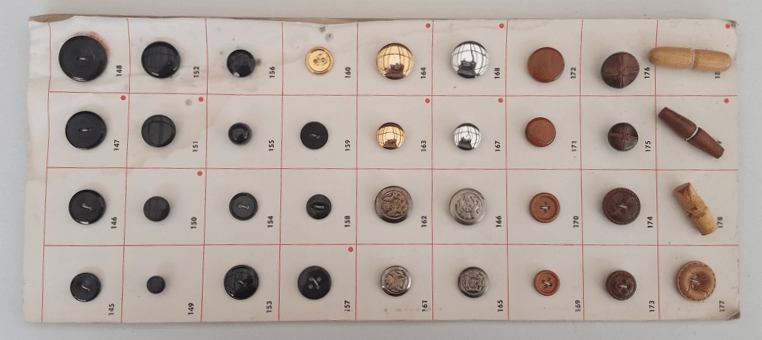


Notions of Australia
The ‘Big W’ price sticker is the only indication this line was sold through Woolworths variety ‘Big W’ stores. The card on the right has a style of button sold on early Beauclaire cards.
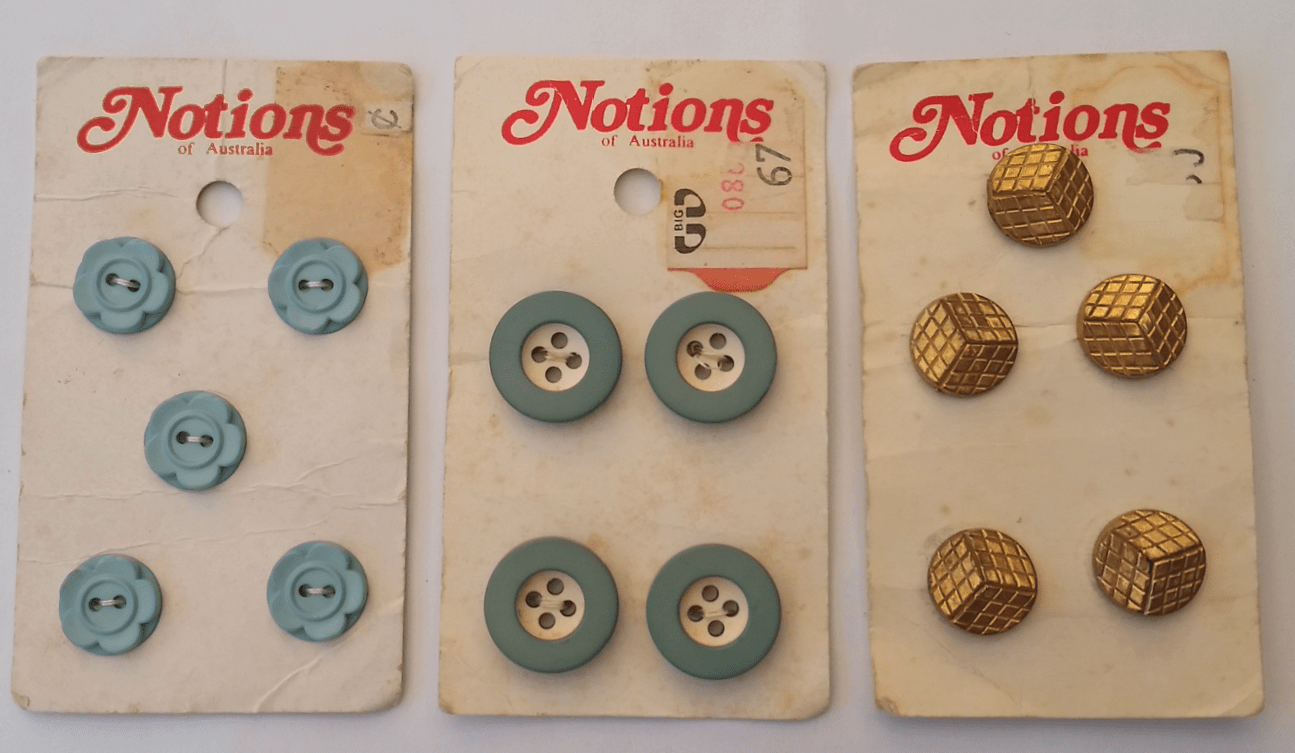
Woolworths now sell Korbond brand haberdashery. Korbond Industries Pty. Ltd. is an Australian firm, founded in Sydney in 1956, specialising in the manufacture and distribution of haberdashery.

